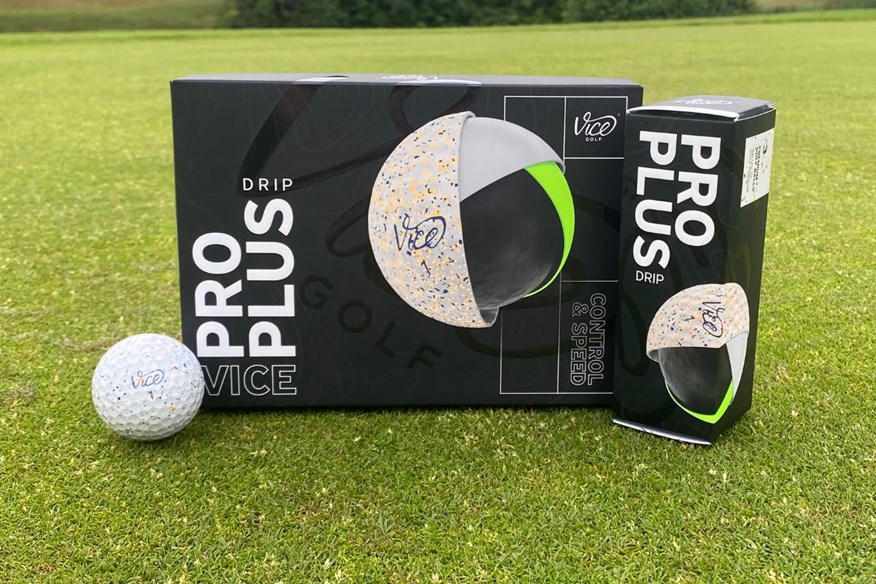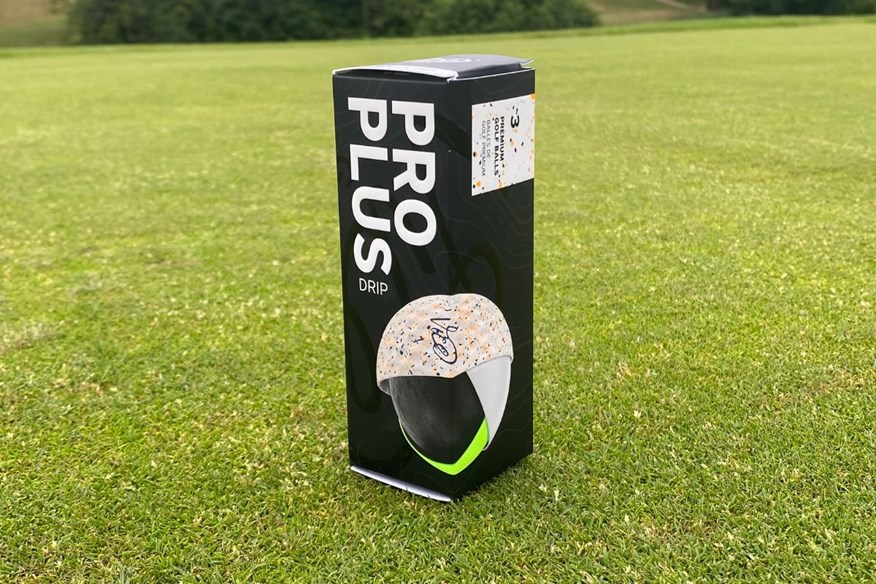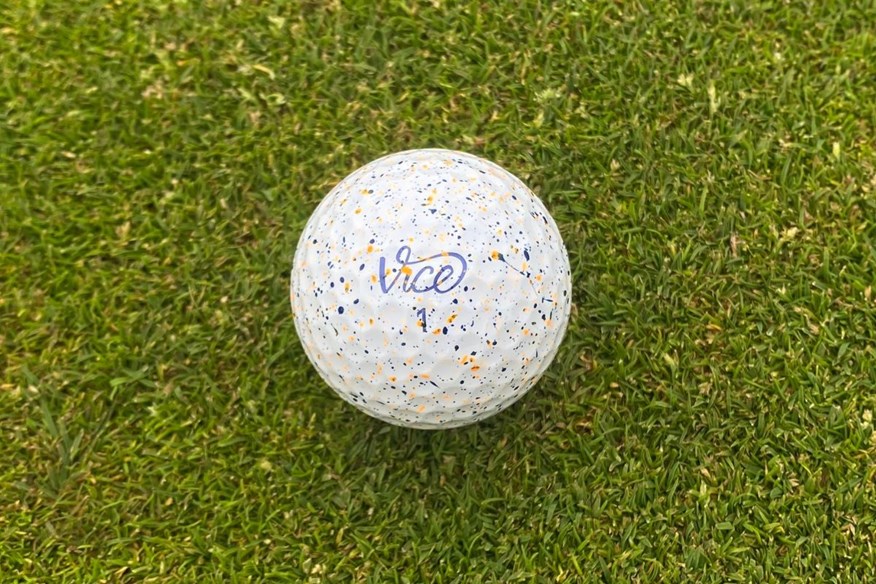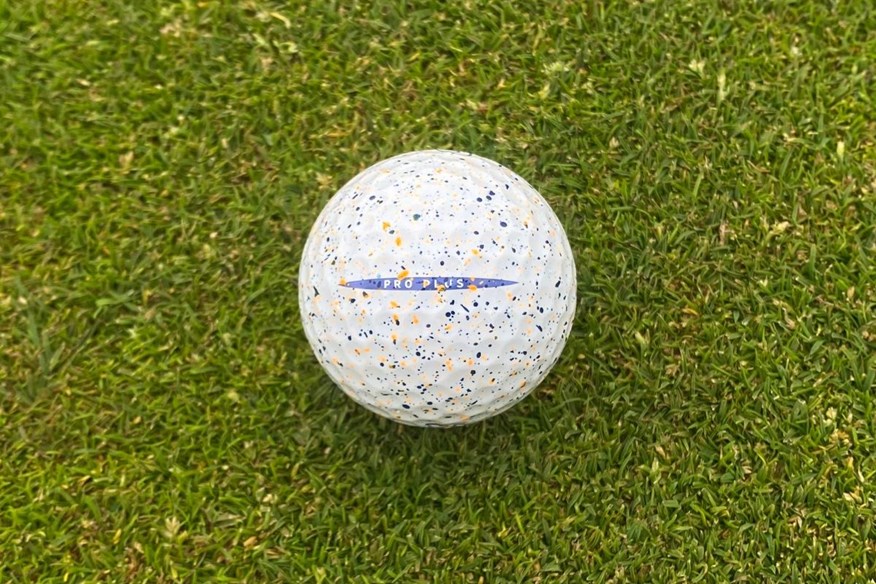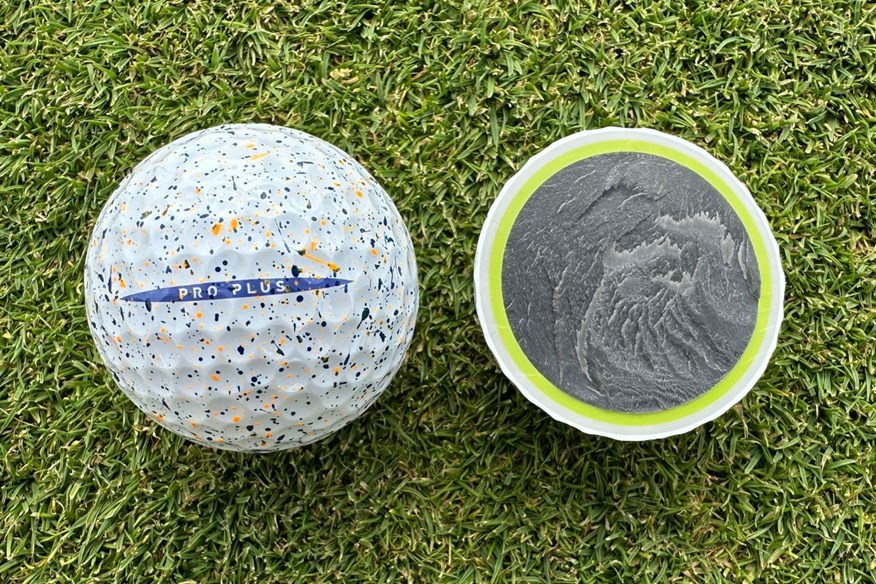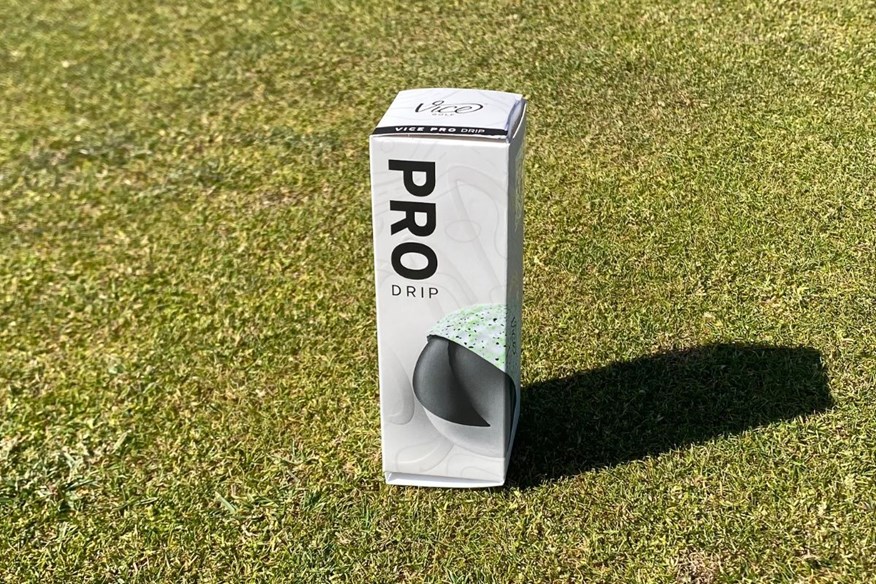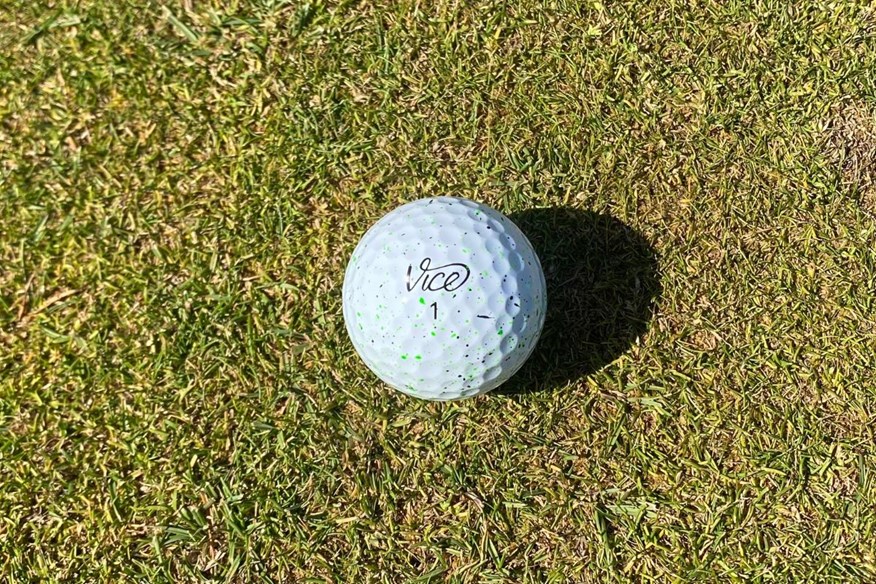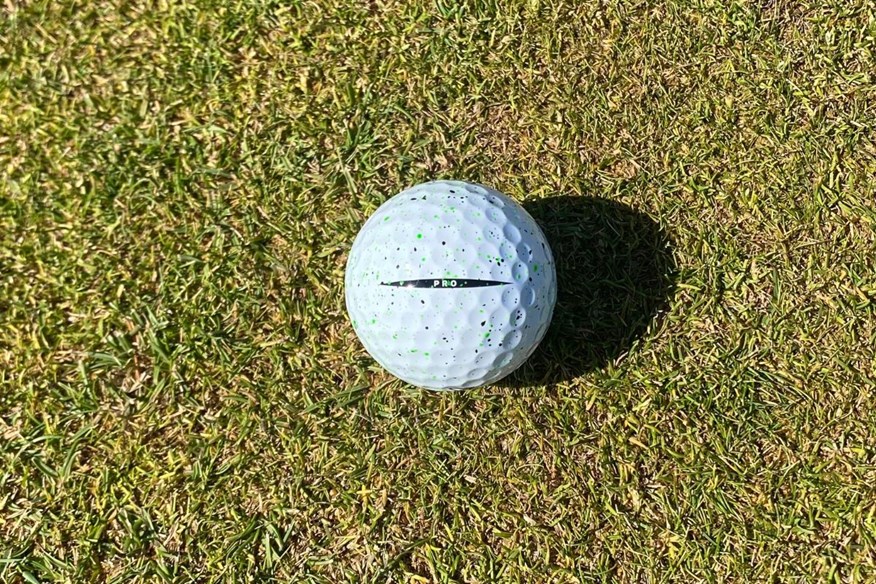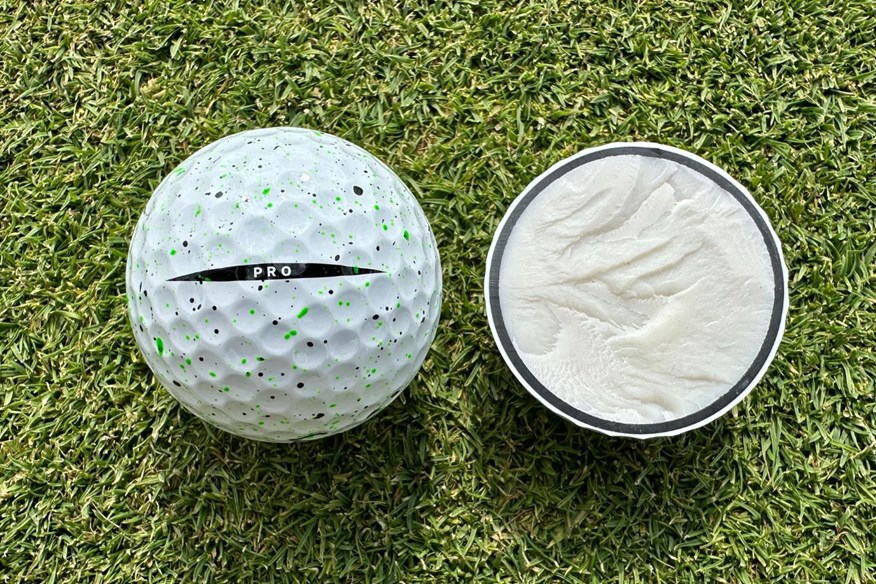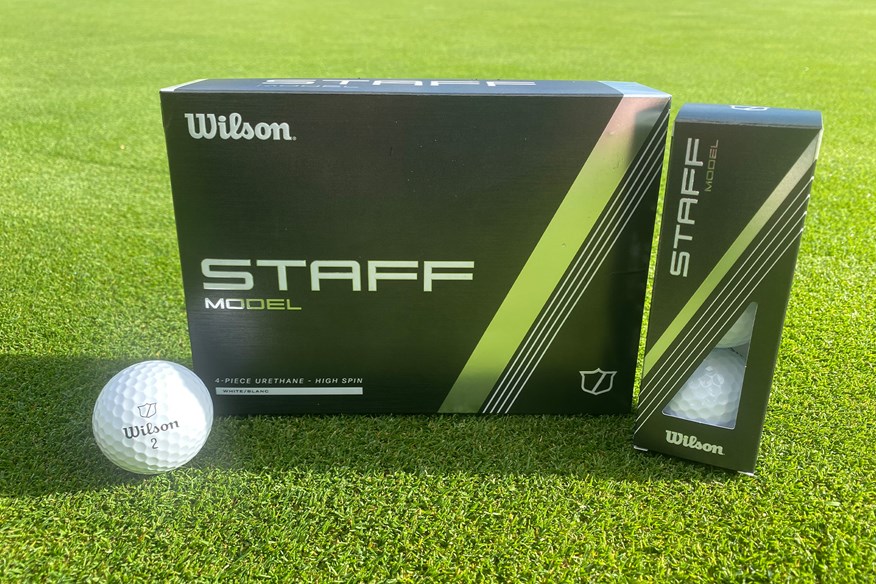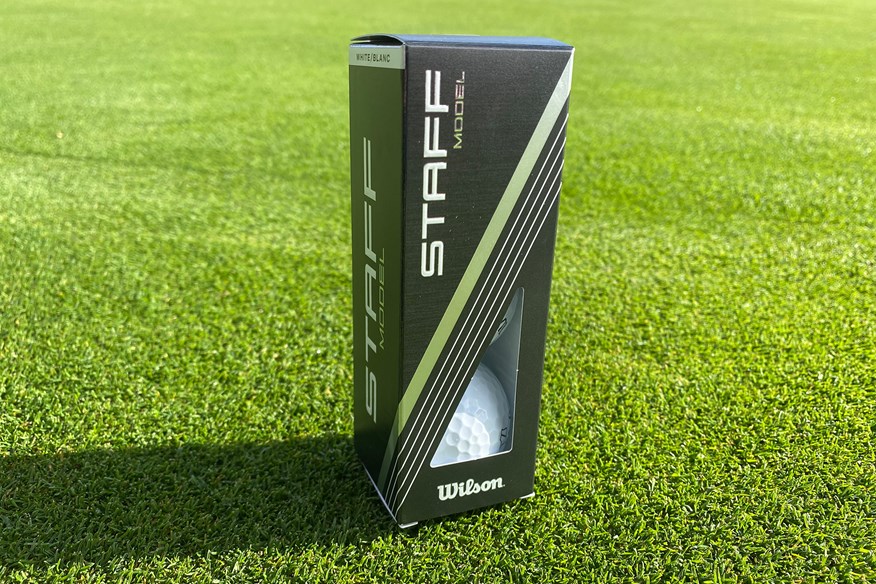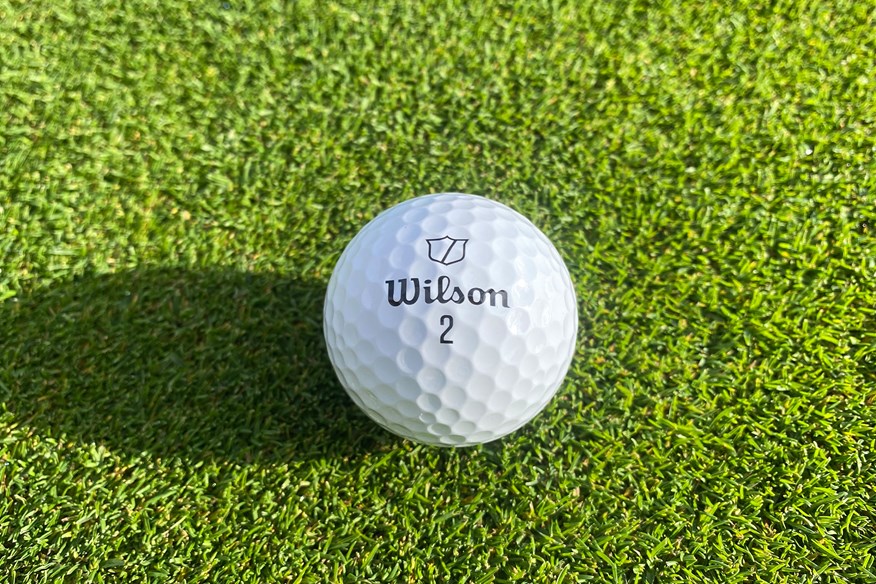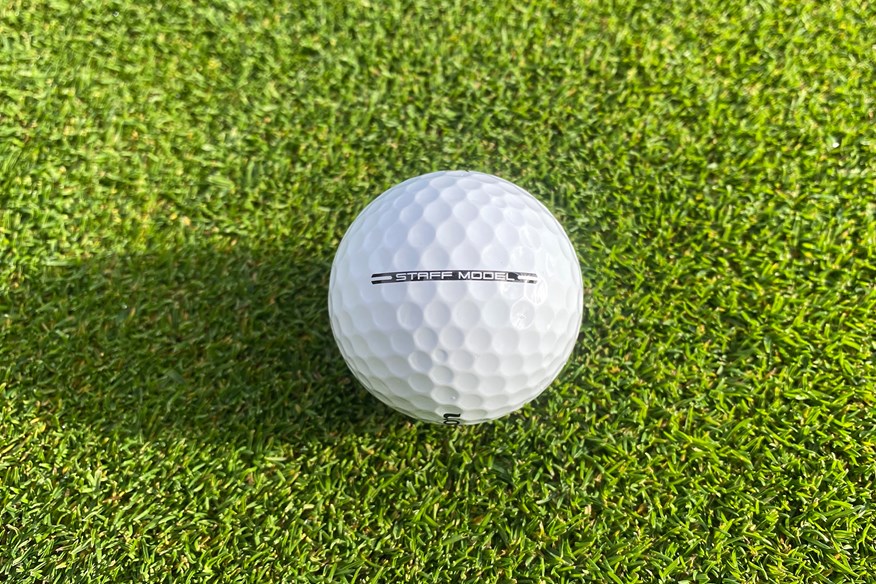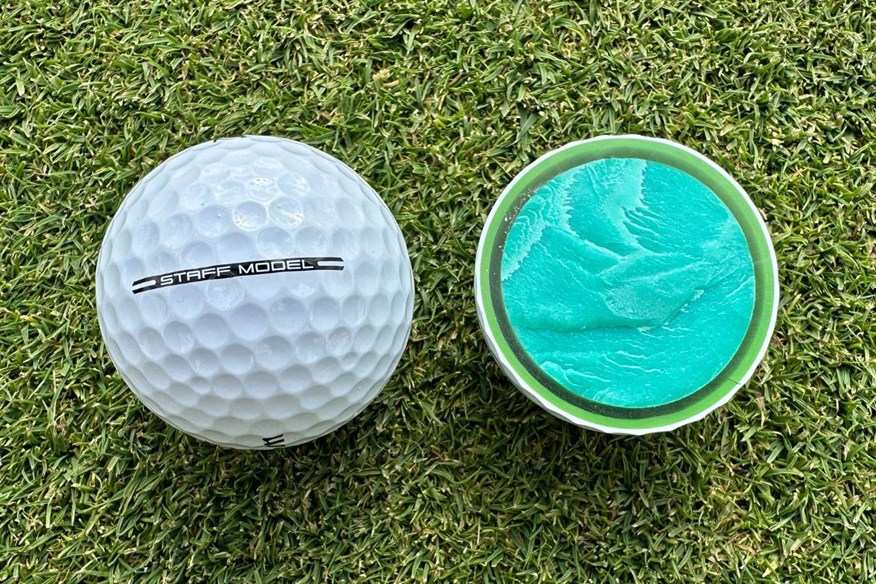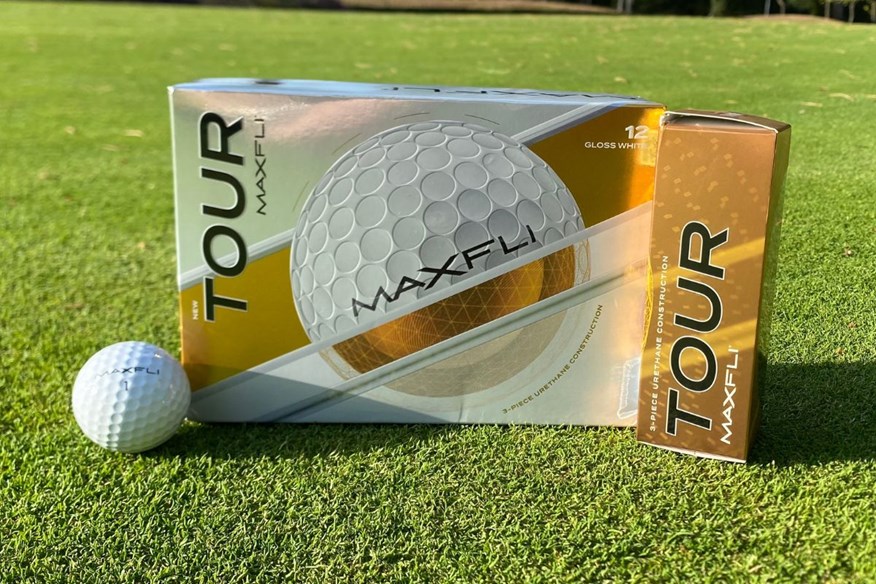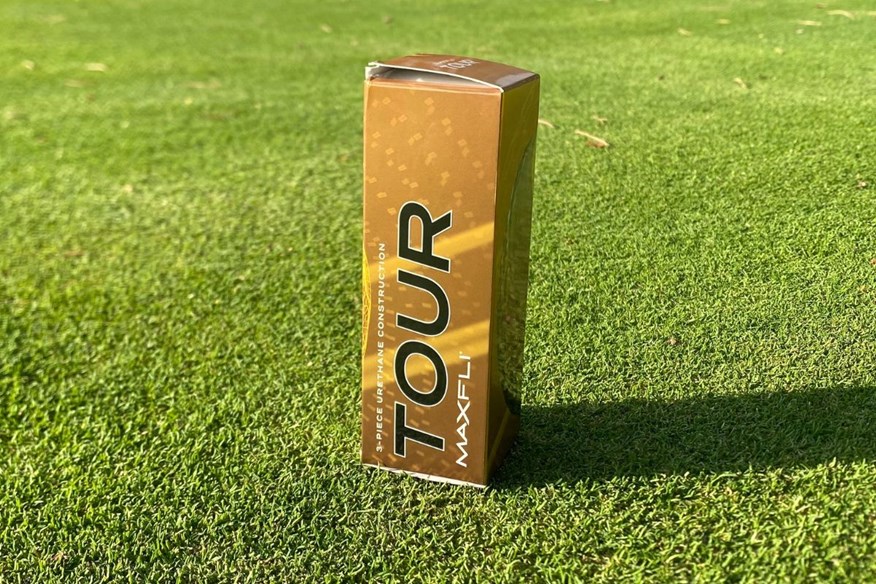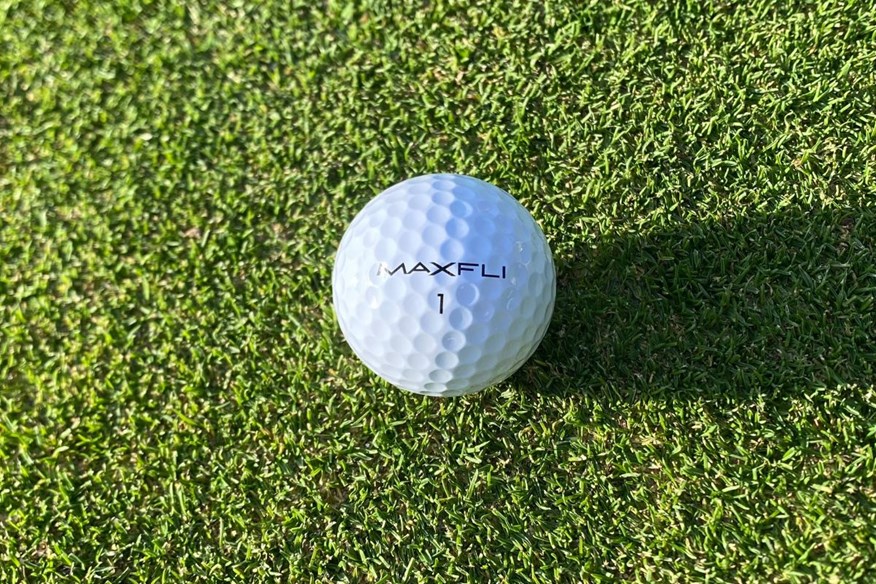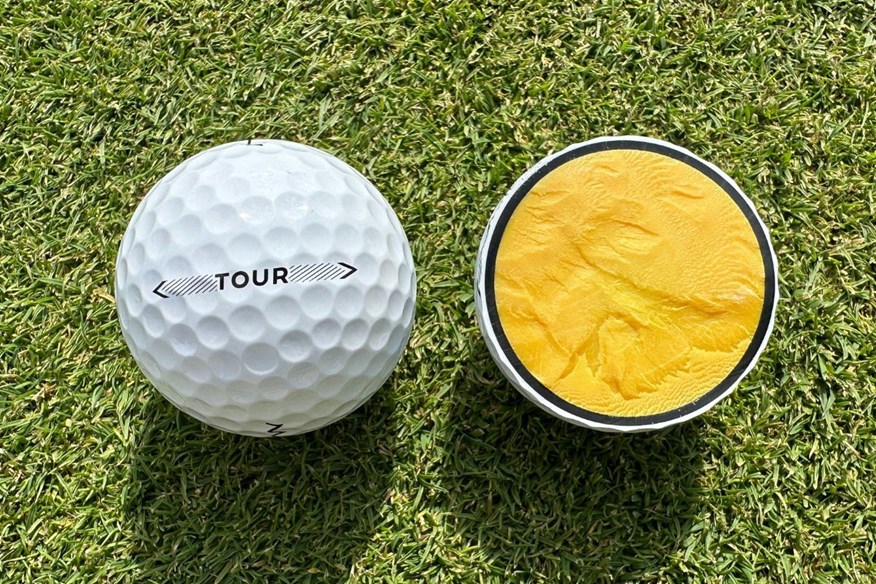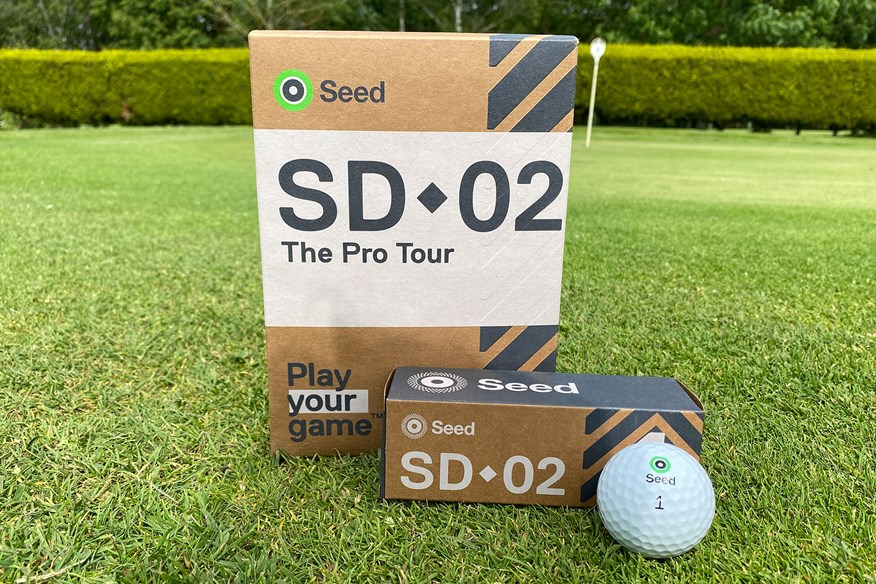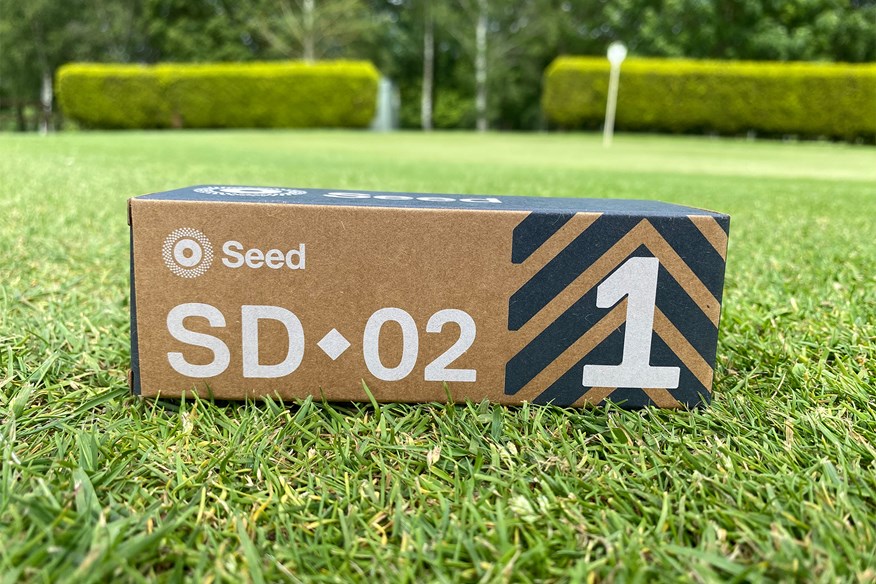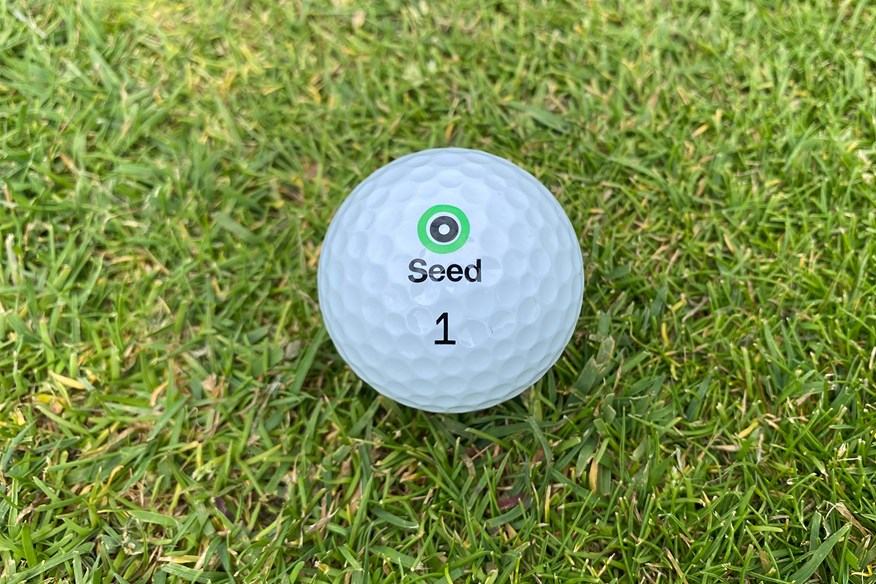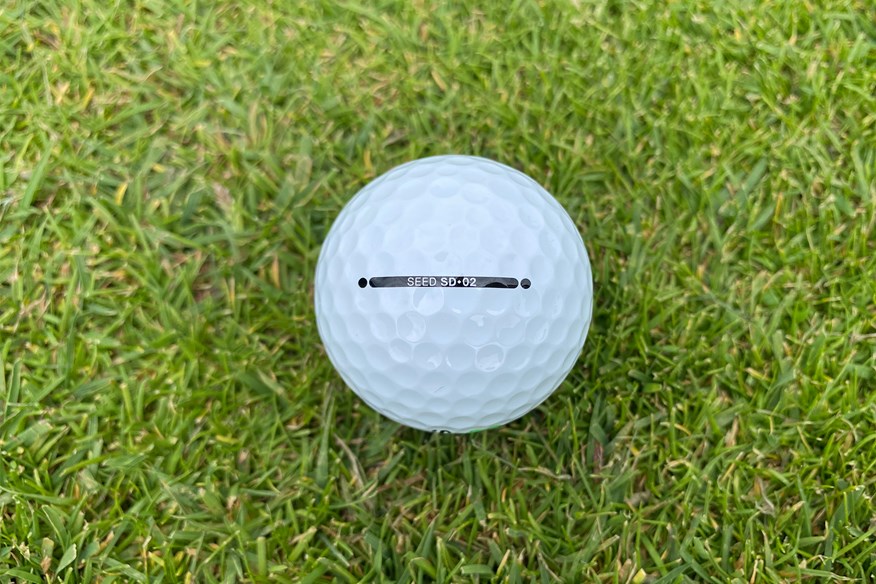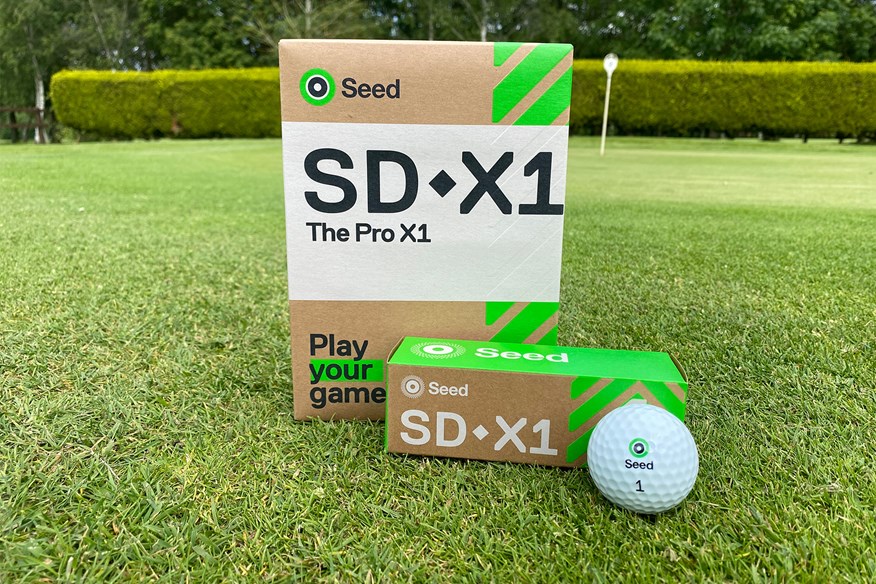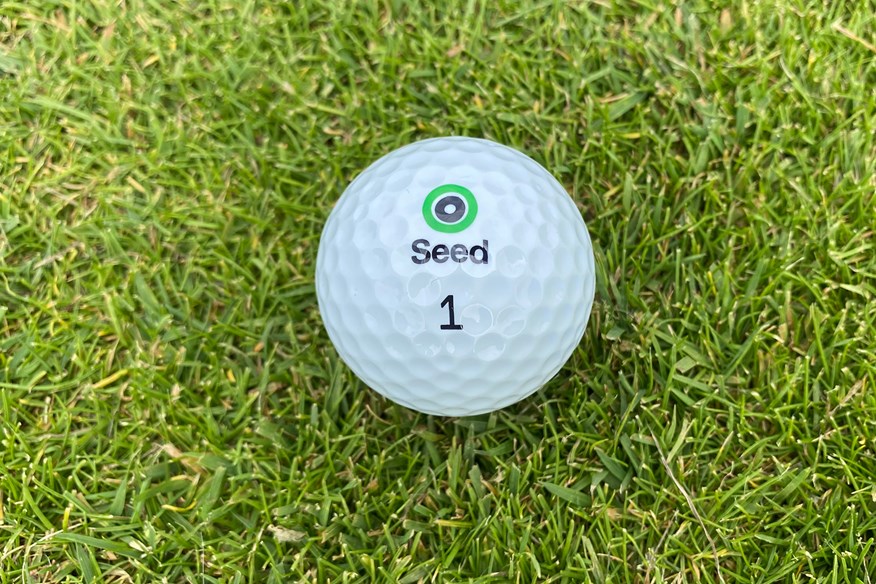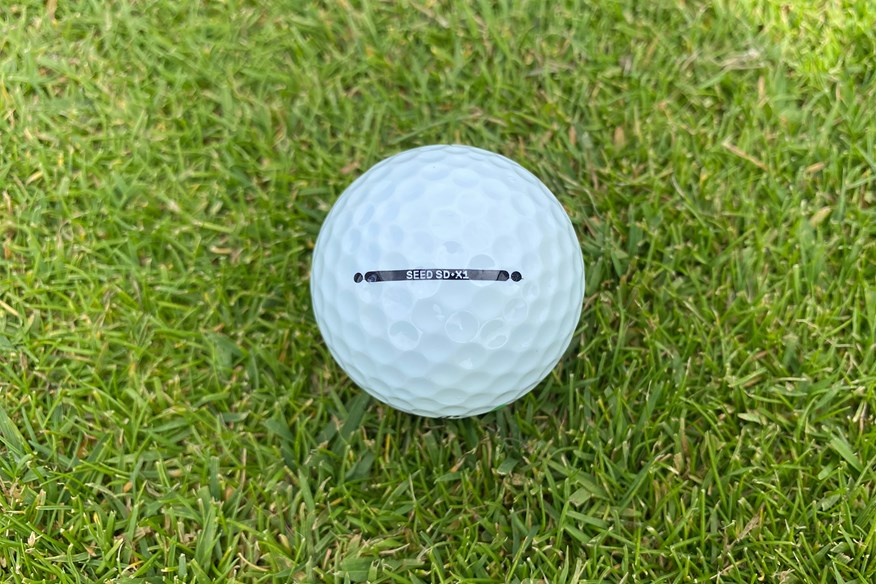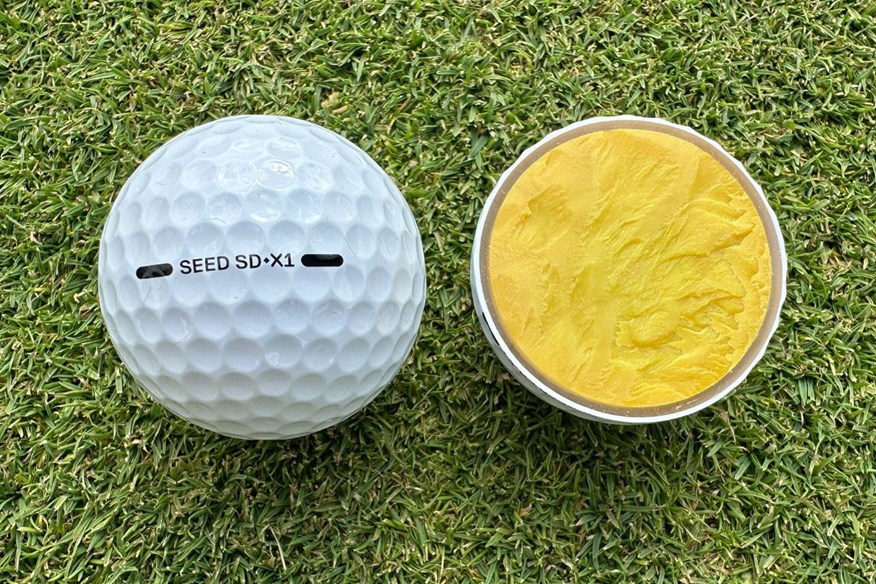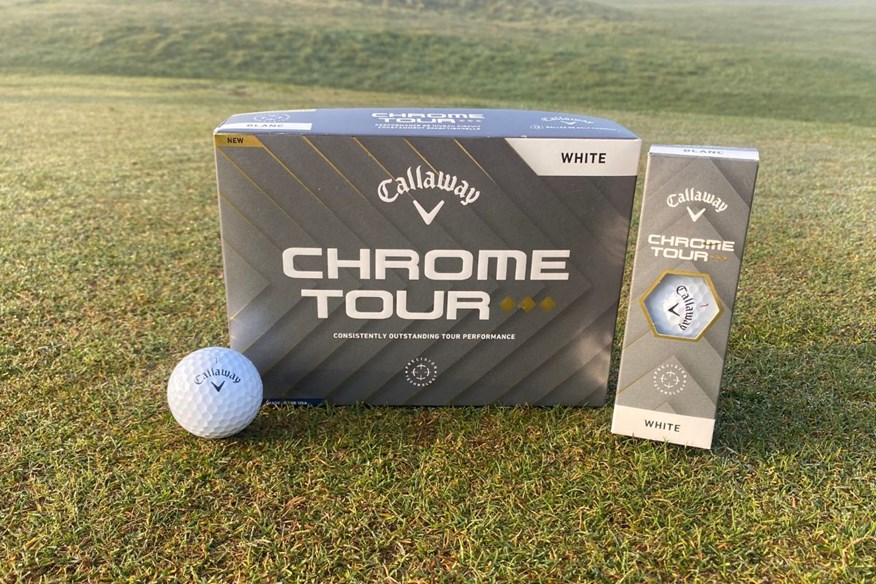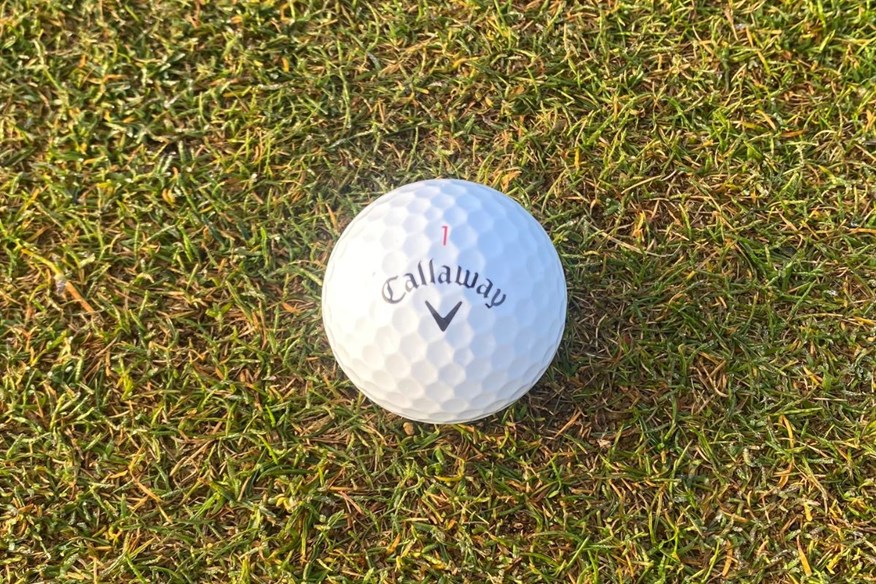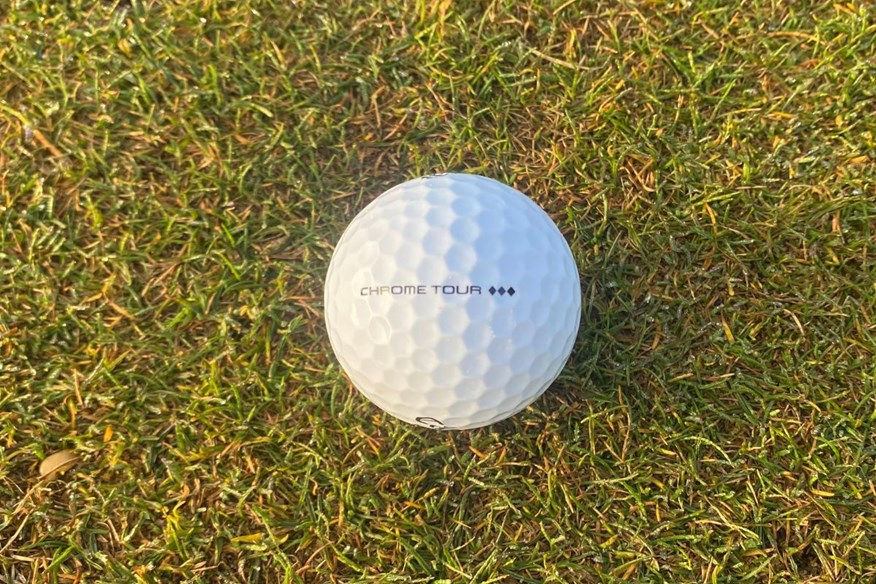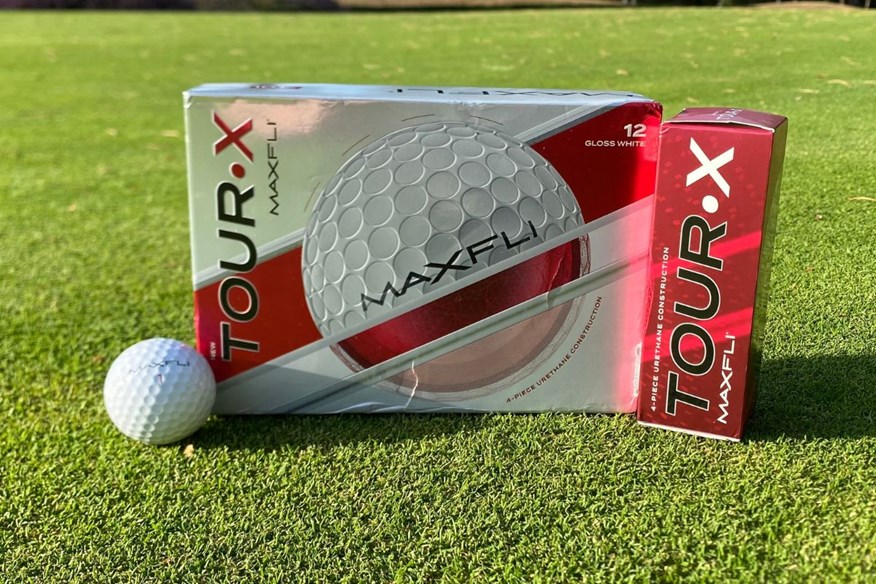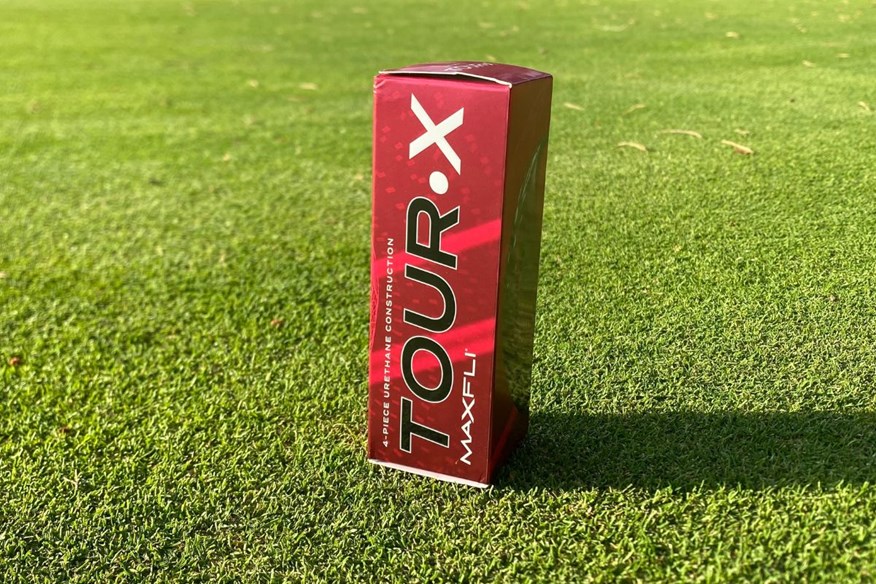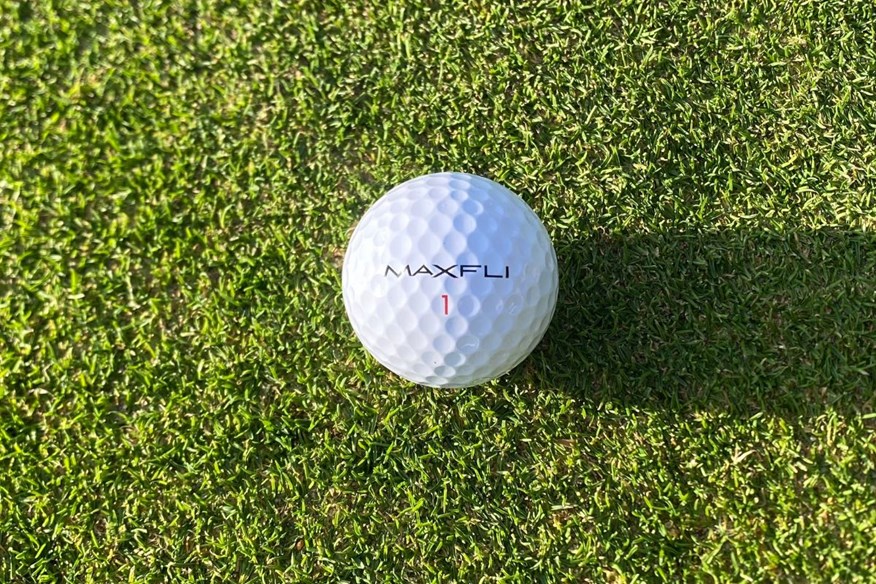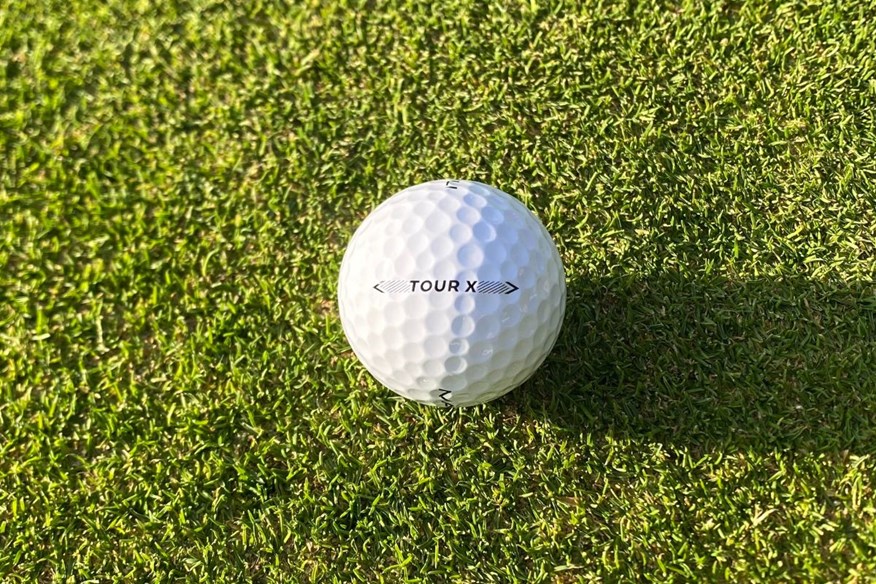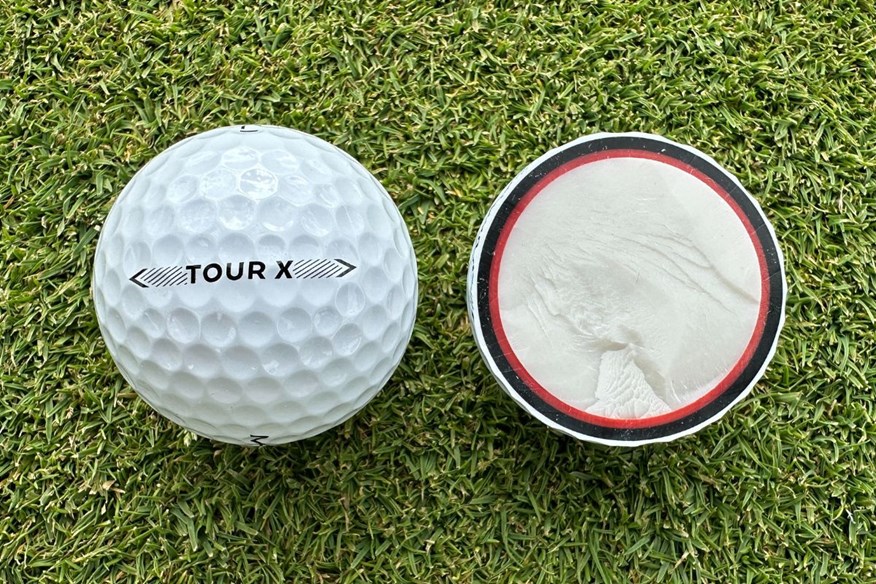Most consistent golf balls 2025: 62 models robot tested and over 50,000 data points
Last updated:
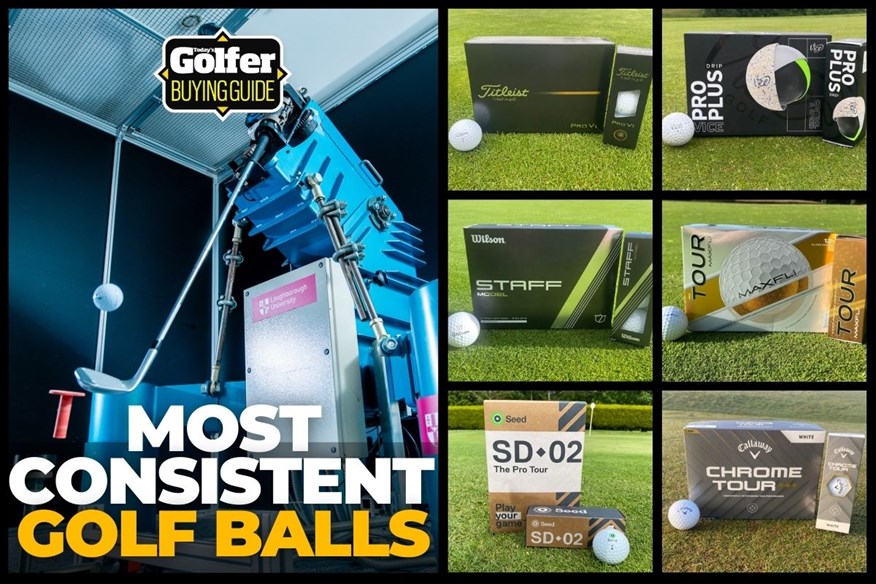
Click here to find out how we conducted our 2025 golf balls test
We’ve tested the game’s most popular models on an R&D robot to reveal the most consistent golf balls on the market.
Jump to:
- At a glance
- How we test golf balls for consistency
- Most consistent golf balls
- Robot test data
- Buying guide
- FAQs
- What to read next
We get it. The pursuit of monster distance, fizzing short game spin, and exceptional value-to-performance ratio will forever be the driving force behind your search for the best golf ball for your game.
But what if we took a step back and looked at performance differently? What if we were to prioritize consistency of performance above all else, before even contemplating what’s the longest golf ball out there, or which one bites hardest on the green?
How would this information influence your buying decisions?
Our 2025 golf ball robot test, featuring 2,232 shots from 62 of the game’s most popular balls, has shown just how fine the performance margins are between models, and that’s with the most repeatable swing on the planet.
And since most of our swings are liable to occasional deviation from the textbook, it’s safe to assume that the minute performance differences we observe on a robot are not the golden bullet to taking your game to the next level.
That’s not to say meaningful differences don’t exist at all, because they do. Premium tour-level models typically deliver superior performances across the board compared to their cheaper club-targeted counterparts, despite some very competitive examples that punch above their weight.
It’s just that by only considering raw numbers on a launch monitor, an equally important part of the picture is being overlooked. This is why we think consistency should be a louder part of the conversation, and not just for pros… but for you, too.
Most consistent golf balls: At a glance
From cutting through a sample of each model of golf ball, we see that very few are identical in their internal construction, and it’s therefore not surprising that we can see significant variations in performance.
It’s why we’ve decided to conduct this analysis, to help steer you toward which golf balls in 2025 are likely to consistently reward and, unfortunately, punish your swing with the outcome it deserves.
The most consistent golf balls 2025
Overall: 1st | Speed: 31st | Launch: 11th | Spin: 9th | Compression: 1st
Most consistent golf ball
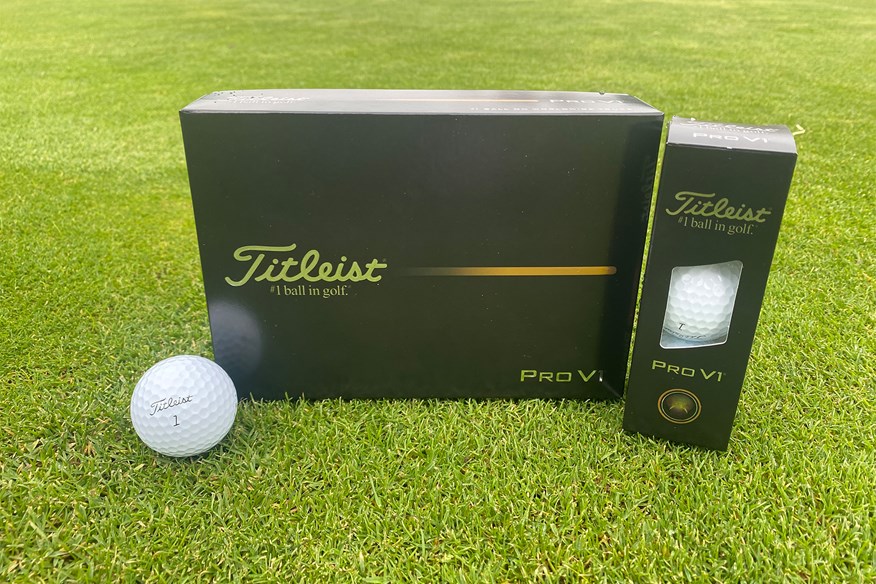

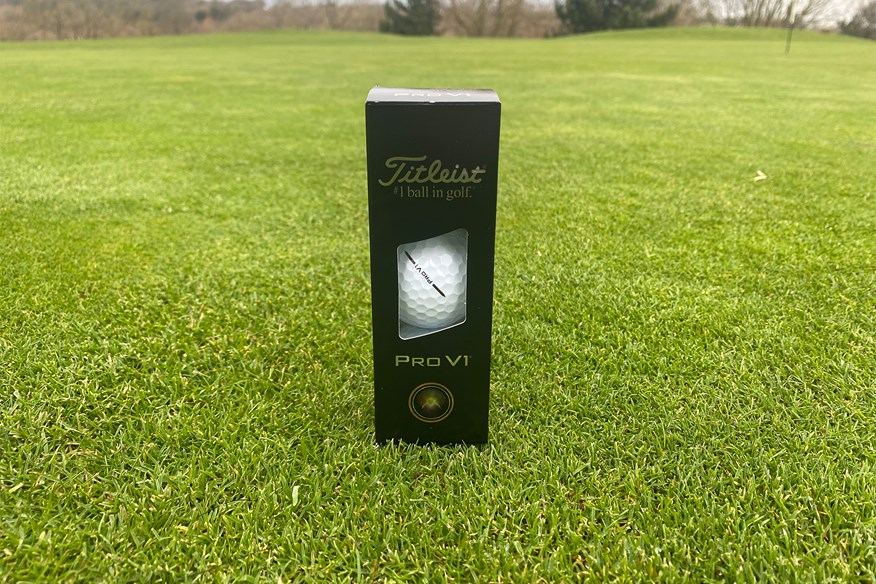

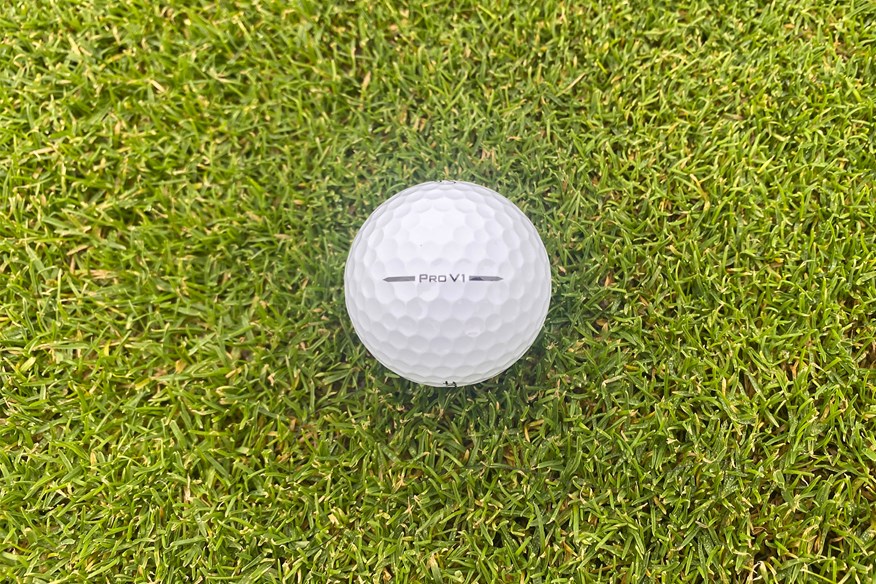
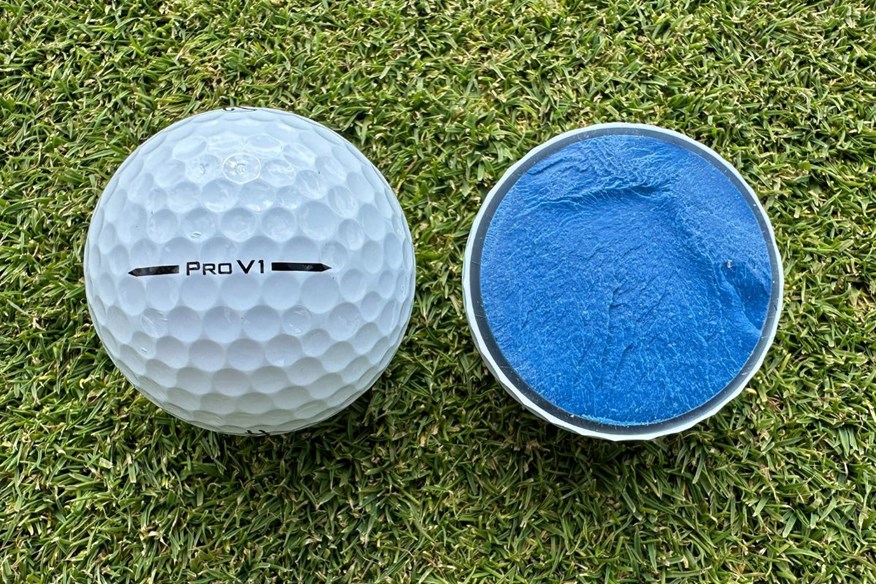
The Titleist Pro V1 is perhaps a tad unfortunate to emerge from our 2025 robot test with only a bronze medal for off-the-tee performance.
The No.1 ball in golf definitely hasn't been disgraced. It's produced extremely solid numbers across all three driver swing speeds, hence why it's the third-best 3-piece Tour-level golf ball off the tee.
At 114mph, the Pro V1 is very strong off the tee, being the second longest golf ball in this category, and one of only two 3-piece Tour-level models to deliver more than 273 yards.
It's a very similar story at 78mph. Pro V1 is the third-longest and third-fastest model in this category (0.3 yards behind the longest and 0.1mph slower than the fastest). At 93mph, Pro V1 just misses out on the podium places for carry and speed.
Pro V1 is a lower-spinning golf ball than Pro V1x, and that's exactly what our robot test results show. With the 7-iron and 40-yard pitch shots, the Pro V1 was right around the test average for backspin (4,598rpm and 5,692rpm, respectively).
Titleist Pro V1 is a golf ball for every golfer to consider, not just because it's the No.1 ball in golf, but because it suits such a wide range of golfers. It might not have scooped up tons of awards, but the data shows it's a very consistent performer that performs well in every area on the golf course.
On-course verdict
When I played the 2025 Titleist Pro V1, I experienced a striking combination of versatility, control, and responsiveness across the golf course. From tee to green, it delivers excellent distance and a penetrating, consistent ball flight, aided by a firmer high gradient core and refined dimple design.
The feel was outstanding, soft yet incredibly responsive, making every shot, from driver to putter, feel satisfying. Around the greens, I was equally impressed, short game spin and control feel heightened, helping me stop shots quickly and confidently.
Additionally, the ball’s durability has noticeably improved over previous generations - after nine holes, I didn’t feel the need to swap balls due to scuffs or wear.
Honestly, I was surprised by just how much this model exceeded my expectations. It truly performs in every area, from superb feel and responsiveness to outstanding distance control and short game precision.
Read our full Titleist Pro V1 golf ball review.
Pros
- The most consistent golf ball of 2025
- Much better feel and response than previous model
- Impressive distance off the tee
Cons
- Lower short game spin than expected
| Carry distance (yds) | Driver 114mph - 273.2 | Driver 93mph - 208.7 | Driver 78mph - 161 | 7-iron - 155.3 |
| Ball speed (mph) | Driver 114mph - 163.9 | Driver 93mph - 133.8 | Driver 78mph - 113.1 | 7-iron - 108.3 |
| Backspin (rpm) | Driver 114mph - 2,684 | Driver 93mph - 2,709 | Driver 78mph - 2,525 | 7-iron - 4,598 | Pitch - 5,692 |
| Launch angle (°) | Driver 114mph - 11.1 | Driver 93mph - 12.8 | Driver 78mph - 13.8 | 7-iron - 21.1 | Pitch - 31.2 |
| Descent angle (°) | Driver 114mph - 37.2 | Driver 93mph - 32.4 | Driver 78mph - 27.5 | 7-iron - 44.9 | Pitch - 36.7 |
| Peak height (yds) | Driver 114mph - 32.4 | Driver 93mph - 22.5 | Driver 78mph - 15.5 | 7-iron - 29.3 | Pitch - 7 |
| Compression (psi) | 98 |
- Faster high gradient core
- Spherically tiled 388 tetrahedral dimple design
- Speed amplifying high-flex casing layer
- Soft cast urethane elastomer cover
- 3-Piece construction
- Available in white and yellow
- Alternative models include AIM Enhanced and RCT
Overall: 2nd | Speed: 18th | Launch: 10th | Spin: 10th | Compression: 18th
The Vice Pro Plus is one of four golf balls in this category that didn't receive an award, but don't let that put you off. That's largely due to its tee performance. While this is the fastest and longest Vice golf ball, it's not overly competitive against other four-piece and five-piece golf balls.
At 114mph, Pro Plus is the third-lowest performing golf ball, the lowest performing at 93mph, and the third-lowest performing at 78mph. However, for approach play and short game performance, the Pro Plus does improve.
The backspin generated by the Pro Plus with the 7-iron shot is the third-highest within this category (4,807rpm), and the descent angle is 45.1°. The Pro Plus finished just outside the podium places for approach play performance.
It's the same story for short game performance. With 6,090rpm, Pro Plus finished fourth for short game performance by one revolution.
With the Vice Pro Plus, you might not have the most competitive golf ball off the tee, but from the fairway and around the greens, you can expect a golf ball that'll spin easily and is easy to control.
On-course verdict
This is the only golf ball in Vice's Pro range I recommend. That might sound harsh, considering the Pro is one of the best three-piece Tour-level golf balls, but in my on-course experience, I've not seen enough from the Pro that would make me recommend it over the Pro Plus.
This golf ball loses absolutely zero marks for distance, and as a whole, off the tee, I really couldn’t criticise the Pro Plus (except for one thing, which I’ll come to later). My main gripe is its performance around the greens; I just don’t feel as though it spins enough compared to other X-model golf balls.
It could be down to my chipping action, but I definitely find my joy around the greens with other golf balls when it comes to spin and control. Approaching greens, I feel very much the same as I do with regards to this golf ball’s performance off the tee.
Throughout the bag, I get very little feedback from any strike, whether it be good or bad. I distinctly remember hitting a really good tee shot on the 8th hole on the Ailsa Course at Turnberry and saying that it felt “dead”. When you really nail a drive, you want to be saying “that felt amazing,” but it left me feeling underwhelmed.
On the putting green, I feel as though there are more responsive golf balls than the Pro Plus, but you can’t argue with the roll, because it’s solid.
Ultimately, my overarching opinion on the feel and response of the Pro Plus is – as I’ve already mentioned – underwhelming.
Read our full Vice Pro Plus golf ball review.
Pros
- Solid performance from tee to green
- Brilliant value for a premium product
- A versatile model that works for ranging swing speeds
Cons
- A slightly muted feeling and limited feedback
| Carry distance (yds) | Driver 114mph - 271.9 | Driver 93mph - 208.2 | Driver 78mph - 160.5 | 7-iron - 155.2 |
| Ball speed (mph) | Driver 114mph - 163.6 | Driver 93mph - 133.7 | Driver 78mph - 114.3 | 7-iron - 112.9 |
| Backspin (rpm) | Driver 114mph - 2,780 | Driver 93mph - 2,848 | Driver 78mph - 2,643 | 7-iron - 4,807 | Pitch - 6,090 |
| Launch angle (°) | Driver 114mph - 10.9 | Driver 93mph - 12.7 | Driver 78mph - 13.7 | 7-iron - 20.8 | Pitch - 30.3 |
| Descent angle (°) | Driver 114mph - 37.4 | Driver 93mph - 33 | Driver 78mph - 27.8 | 7-iron - 45.1 | Pitch - 35.4 |
| Peak height (yds) | Driver 114mph - 32.2 | Driver 93mph - 22.8 | Driver 78mph - 15.6 | 7-iron - 29.4 | Pitch - 6.6 |
| Compression (psi) | 116 |
- Ultra thin cast urethane cover
- Versatile magnesium ionomer outer mantle
- Surlyn grade inner mantle
- Lightweight speed core
- 336 dimples
- 4-Piece construction
- Available in white and lime
- Alternative models include Drip, Shade, and Tracer
Overall: 3rd | Speed: 21st | Launch: 18th | Spin: 18th | Compression: 5th
The Vice Pro is said to sit between the Pro Plus and Pro Air in Vice's Pro range. That's exactly where the Pro sits for short game performance with 5,708rpm.
With approach play, you can expect a super consistent golf ball that you can trust to carry a similar distance shot after shot because it ranked first for carry distance consistency out of all 62 golf balls. For backspin and descent angle, the Pro is directly between the Pro Plus and Pro Air, with 4,452rpm and a 44.9° descent angle.
The same pattern appears in driving performance. The Pro is the longest golf ball of the Pro series at 93mph and 78mph, but it's in the middle of the pack when it comes to spin. However, at 114mph, it's the highest-spinning, and it's then shorter than the Pro Plus, but still longer than the Pro Air.
The Pro delivers very consistent carry numbers in approach play performance, which means it's a ball you can trust to travel a similar distance. The Pro is an inferior golf ball to the Pro Plus if you have a quick swing speed, but it's a much closer match-up at 93mph and 78mph.
Considering the Pro is Vice's challenger to the Titleist Pro V1, it's well worth giving it a go because it's nearly half the price. However, for the same price, I would suggest opting for the Pro Plus instead.
On-course verdict
I genuinely believe that Vice have missed the mark with the Vice Pro. I don’t see it offering anything more or different from the Pro Plus.
I would say that the Vice Pro performed best for me off an iron – specifically longer irons - because I knew my shot would carry and roll.
I didn’t really enjoy the feel and response of the Vice Pro, but I get that this is completely subjective! For me, there wasn’t a lot of feedback.
Between the Vice Pro Plus and Vice Tour, I think every golfer has a solid option without having to consider the Vice Pro.
Read our full Vice Pro golf ball review.
Pros
- Great value for money
- Competitive distance at varying swing speeds
- Consistent carry distance
Cons
- Limited feedback from every shot
| Carry distance (yds) | Driver 114mph - 269.8 | Driver 93mph - 208.6 | Driver 78mph - 160.7 | 7-iron - 156.9 |
| Ball speed (mph) | Driver 114mph - 163.1 | Driver 93mph - 133.6 | Driver 78mph - 113.1 | 7-iron - 108.8 |
| Backspin (rpm) | Driver 114mph - 2,829 | Driver 93mph - 2,759 | Driver 78mph - 2,499 | 7-iron - 4,452 | Pitch - 5,708 |
| Launch angle (°) | Driver 114mph - 10.8 | Driver 93mph - 12.9 | Driver 78mph - 13.8 | 7-iron - 21.3 | Pitch - 30.9 |
| Descent angle (°) | Driver 114mph - 37.4 | Driver 93mph - 32.8 | Driver 78mph - 27.3 | 7-iron - 44.9 | Pitch - 36.4 |
| Peak height (yds) | Driver 114mph - 31.9 | Driver 93mph - 22.8 | Driver 78mph - 15.4 | 7-iron - 29.6 | Pitch - 7 |
| Compression (psi) | 106 |
- Ultra-thin cast urethane cover
- Surlyn grade mantle
- Size-optimised High Energy Speed Core (HESC)
- 318 dimples
- 3-Piece construction
- Available in white and lime
- Alternative models include Drip, Shade, and Tracer
Overall: 4th | Speed: 22nd | Launch: 20th | Spin: 21st | Compression: 7th
Most consistent three-piece club golfer model



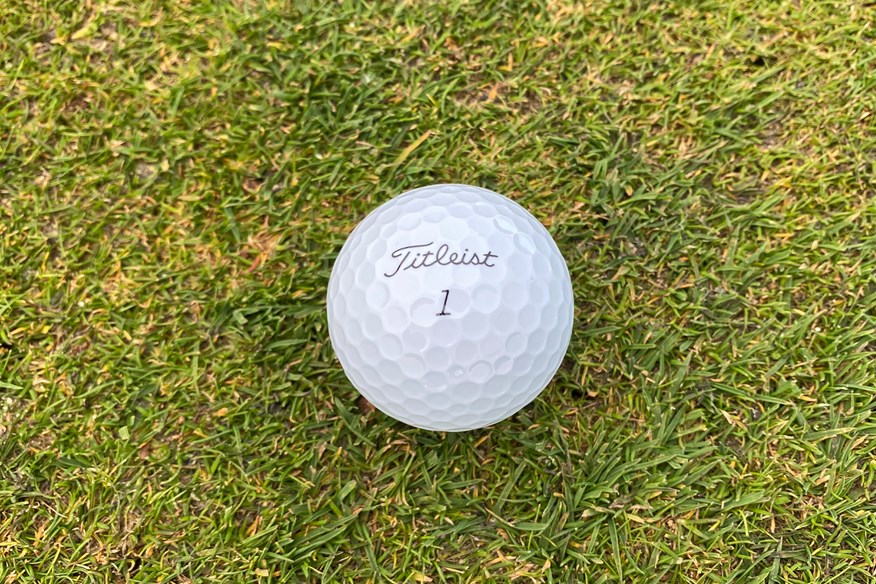
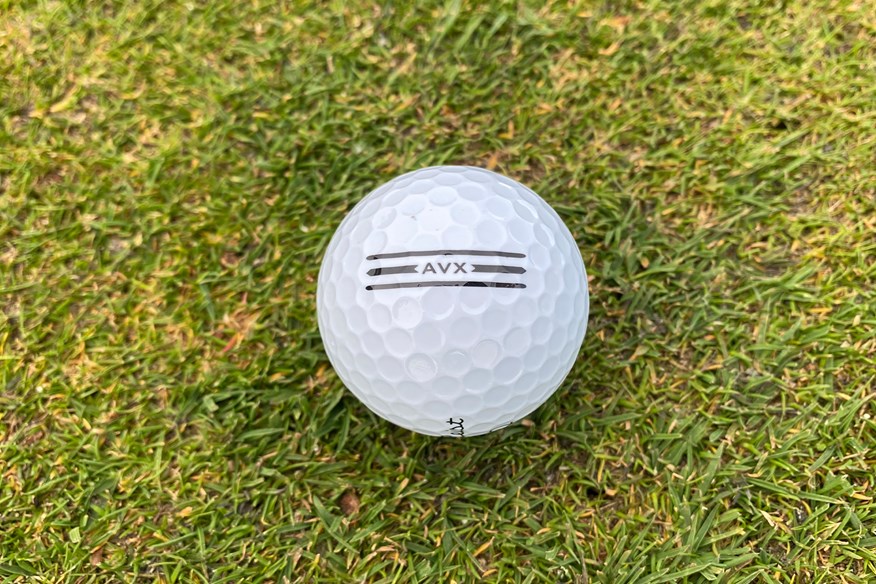

The AVX is an outstanding golf ball that some people might consider to be a Tour-level golf ball, but our opinion is, compared to the Pro V1, this golf ball sits more in line with 3-piece club golfer models.
It's hardly surprising the AVX is a medal winner for tee to green performance at 114mph, given this golf ball's characteristics. The bronze medal might not be as high as expected, but it had good opposition ahead. Titleist sells the AVX as a long, low-spin, low-flying golf ball offering amazing feel and greenside control.
Approaching and playing around the greens, AVX is a low-spinning golf ball, but that's as expected. It's difficult to comment on control from the robot test data, but given the descent angles both with the 7-iron and pitch shots, you should expect good control even if spin isn't the highest.
Moving to the tee box, moderate and quick swing speeds is where the AVX performs highest. At 114mph, it's one of only three golf balls in its category to travel farther than 271 yards, it's the third fastest golf ball, and the lowest-spinning. AVX is the second-longest golf ball at 93mph (same ranking as 114mph), fourth fastest, and fourth lowest-spinning.
Dropping down to 78mph, the AVX didn't rank within the top three for carry, speed, or spin.
Titleist's AVX is a solid 3-piece club golfer golf ball because of how versatile it is. No matter how fast you swing a golf club, the AVX will serve you well.
On-course verdict
The Titleist AVX doesn't present itself to me as a golf ball I would want to play often. However, in the right - or should I say wrong - conditions, I do enjoy playing with AVX.
From the AVX, you're guaranteed a golf ball that's going to fly low and generate low-spin. For that very reason, I enjoy playing with AVX in windy conditions on the links.
The short game performance has noticeably improved from the previous generation, and so has the feel and response.
The AVX is a very pleasurable golf ball, especially if you're looking to fly a ball lower and generate less spin.
Read our full Titleist AVX golf ball review.
Pros
- Brilliant long game performance
- Short game performance has been improved over the previous model
- Low and piercing ball flight is amazing in windy conditions
Cons
- Lower ball flight won't be the preference of every golfer
| Carry distance (yds) | Driver 114mph - 271.1 | Driver 93mph - 208.1 | Driver 78mph - 160.4 | 7-iron - 156 |
| Ball speed (mph) | Driver 114mph - 162.8 | Driver 93mph - 133.3 | Driver 78mph - 112.9 | 7-iron - 108.2 |
| Backspin (rpm) | Driver 114mph - 2,613 | Driver 93mph - 2,606 | Driver 78mph - 2,408 | 7-iron - 4,429 | Pitch - 5,318 |
| Launch angle (°) | Driver 114mph - 11.1 | Driver 93mph - 13 | Driver 78mph - 14 | 7-iron - 21.2 | Pitch - 32 |
| Descent angle (°) | Driver 114mph - 36.4 | Driver 93mph - 32 | Driver 78mph - 27.1 | 7-iron - 44.7 | Pitch - 37.9 |
| Peak height (yds) | Driver 114mph - 31.4 | Driver 93mph - 22.3 | Driver 78mph - 15.3 | 7-iron - 29.2 | Pitch - 7.4 |
| Compression (psi) | 84 |
- Large high-speed, high-gradient core
- Proprietary urethane cover
- Upgraded thin high-flex casing layer
- Aerodynamic dimple pattern
- 346 dimples
- 3-Piece construction
- Available in white and yellow
- An alternative model is the AIM 360
Overall: 5th | Speed: 24th | Launch: 18th | Spin: 17th | Compression: 14th
The Wilson Staff Model is a very impressive golf ball that unfortunately sits in the shadow of the Staff Model X. That might sound harsh, considering this is the best golf ball for tee to green performance at 114mph in this category.
At the 114mph driver swing speed, this is the third-longest golf ball, and one of only three to exceed 274 yards in the entire test. At a moderate and slower swing speed, the Staff Model is a solid performer, but not as strong as the Staff Model X - third at 93mph and second at 78mph.
There is one area where the Staff Model outshines the Staff Model X, and that's with approach play. Staff Model scooped up the silver medal for approach play with the Staff Model X, one place behind in the bronze medal position.
Approaching and playing around the greens, the Staff Model doesn't generate as much spin as the Staff Model X, but its distance is more consistent. Despite being a lower-spinning golf ball, you might be able to trust the Staff Model more to carry a repeatable distance - even if it is shorter.
At quick swing speeds, this is definitely a good option if you want a golf ball that can do everything, but with the Staff Model X just behind at 114mph for tee to green performance, and given how it's better-performing almost everywhere else, it's hard not to recommend the Staff Model X instead.
That being said, the best way to differentiate is if you want a lower-spinning, softer golf ball, go for the Staff Model.
On-course verdict
The Staff Model is a very strong performer from tee to green. If you don't want a high-spinning, firm-feeling golf ball, this is your best option. This model isn't as impressive as the Staff Model X, but it's pretty darn close.
From tee to green, the Staff Model is super consistent, and it ticks a lot of boxes for the majority of golfers. Regardless of your ability or swing speed, the Staff Model will work for you if you want a golf ball that's easy to control when playing into and around greens and competitive for distance off the tee.
There's a ton to like about the Staff Model, and its softer feel compared to the Staff Model X is sure to please a lot of golfers.
Read our full Wilson Staff Model golf ball review.
Pros
- Incredible distance off the tee
- Amazing short game performance
- Softer feel will be appreciated by many golfers
Cons
- Overall performance is just below that of the Staff Model X
| Carry distance (yds) | Driver 114mph - 274.3 | Driver 93mph - 209.2 | Driver 78mph - 161.7 | 7-iron - 156.3 |
| Ball speed (mph) | Driver 114mph - 164.7 | Driver 93mph - 134 | Driver 78mph - 113.3 | 7-iron - 109 |
| Backspin (rpm) | Driver 114mph - 2,829 | Driver 93mph - 2,703 | Driver 78mph - 2,595 | 7-iron - 4,653 | Pitch - 5,993 |
| Launch angle (°) | Driver 114mph - 11.2 | Driver 93mph - 12.8 | Driver 78mph - 13.9 | 7-iron - 21.1 | Pitch - 30.6 |
| Descent angle (°) | Driver 114mph - 38.6 | Driver 93mph - 32.4 | Driver 78mph - 28 | 7-iron - 45.2 | Pitch - 35.8 |
| Peak height (yds) | Driver 114mph - 34.1 | Driver 93mph - 22.5 | Driver 78mph - 15.8 | 7-iron - 29.8 | Pitch - 6.8 |
| Compression (psi) | 112 |
- V-Cor advanced performance
- Medium compression core with velocity-boosting additive
- 3SIX2 seamless urethane cover
- 362 dimples
- 4-Piece construction
- Available in white and yellow
Overall: 6th | Speed: 24th | Launch: 21st | Spin: 19th | Compression: 9th
The Maxfli Tour is one of three golf balls in Maxfli's Tour line-up, and it's the middle-ground golf ball of the three in the range. The 4-piece Tour X is the higher-spinning model, and the 3-piece Tour S is the lower-spinning model. Our test results show this is exactly where the Tour sits.
For short game performance, the Tour is right around the test average with 5,634 rpm backspin, and it places it between the Tour X and Tour S. It's exactly the same story with approach play performance, too. However, the Tour is slightly below the test average by 100rpm backspin (4,397rpm).
At 78mph and 93mph, the Tour sits directly between the Tour X and Tour S for spin, and that makes it a slightly longer and faster golf ball compared to the Tour S at all three swing speeds, but at 114mph, it spins marginally more than the Tour X (2rpm). However, that's not enough to make it faster or longer than the Tour X.
The Maxfli Tour is what I call a goldilocks golf ball because it's not too high-spinning or too low-spinning, it's right in the middle. For that reason, if you don't need help getting the ball to spin or stopping the ball from spinning too much, the Tour is a brilliant option.
On-course verdict
My favorite Maxfli golf ball is the Tour X, but closely following is the Tour. This is a softer golf ball, which might be the reason why I'm not as much of a fan.
The Tour generates respectable spin in the short game and admirable distance off the tee. It's a very easy golf ball to get on with because while it does nothing spectacularly, it does nothing wrong.
The Tour is arguably the most versatile premium Maxfli golf ball, but for my game, the Tour X aligns with more of my wants and needs because it's higher-spinning and higher-flying.
Pros
- Very good short game spin and control
- Soft yet responsive feel
- Penetrating ball flight
Cons
- Difficult to recommend ahead of the Tour X
| Carry distance (yds) | Driver 114mph - 269.3 | Driver 93mph - 208.6 | Driver 78mph - 160.8 | 7-iron - 157.1 |
| Ball speed (mph) | Driver 114mph - 162.6 | Driver 93mph - 133.6 | Driver 78mph - 113 | 7-iron - 108.7 |
| Backspin (rpm) | Driver 114mph - 2,830 | Driver 93mph - 2,705 | Driver 78mph - 2,554 | 7-iron - 4,397 | Pitch - 5,634 |
| Launch angle (°) | Driver 114mph - 11 | Driver 93mph - 12.9 | Driver 78mph - 13.8 | 7-iron - 21.2 | Pitch - 31.3 |
| Descent angle (°) | Driver 114mph - 37.8 | Driver 93mph - 32.5 | Driver 78mph - 27.6 | 7-iron - 44.7 | Pitch - 36.9 |
| Peak height (yds) | Driver 114mph - 32.4 | Driver 93mph - 22.6 | Driver 78mph - 15.5 | 7-iron - 29.4 | Pitch - 7.2 |
| Compression (psi) | 100 |
- Cast urethane cover
- Polyhedron 318 dimple design
- High-speed mantle
- 3-Piece construction
- Available in white and yellow
Overall: 7th | Speed: 27th | Launch: 19th | Spin: 16th | Compression: 12th
The Seed SD-02 is the best-performing DTC golf ball off the tee. The SD-02 is designed to compete with the likes of the Titleist Pro V1x and TaylorMade TP5x, and that's exactly where it pitches based on the results from our test.
You can even argue it's a better-performing golf ball. At 78mph, the SD-02 is the third-best golf ball from tee to green, and at 93mph and 114mph, it misses out by one, finishing just behind the Pro V1x at 114mph and with the same score as the Staff Model at 93mph.
The SD-02 is such a solid golf ball from tee to green. At all three driver speeds, and with the approach shot, there isn't one area where it doesn't perform well.
Seed says this is a low-launching and low-flying golf ball, but if anything, it is above the average for launch angle and peak height in this category of golf balls.
This is supposedly Seed's highest-spinning golf ball around the green, but it's not as high-spinning as the SD-01. The SD-02 is also not as high-spinning in approach play as other Seed golf balls, and it's the lowest-spinning golf ball within this category (4,397rpm).
However, thanks to the steep descent angle, you can expect the SD-02 to hit and hold greens and come to a quick stop in the short game.
The Seed SD-02 is a solid golf ball from tee to green at varying swing speeds. It's not as high-spinning as other golf balls in this category or other Seed golf balls, but considering this is said to challenge the Pro V1x and TP5x, it does do that, at a cheaper price.
On-course verdict
I genuinely believe that any golfer could play with this golf ball and make it work for them. The SD-02 does it all. It’s long off the tee, it spins on approach shots, and it rolls perfectly on the putting surface.
The ball flight is consistent above all else, so I feel like I can trust that this golf ball will behave off the tee and help me find the fairway. The other plus off the tee is that it’s long, which no golfer can complain about.
The SD-02 feels slightly softer than other X-model golf balls, which will please most golfers because typically X-models tend to be firmer-feeling. I’m a fan of a firmer golf ball, and the SD-02 still feels really good to me.
Throughout the bag, the response you get from the SD-02 is very strong. If you hit the ball well, you’ll know, and if you hit the ball badly (sadly), you’ll know.
Read our full Seed SD-02 golf ball review.
Pros
- Amazing versatile golf ball that works for a wide range of golfers
- Good distance off the tee
- Incredible value for money
Cons
- A lower ball flight compared to other X-model golf balls
| Carry distance (yds) | Driver 114mph - 272.8 | Driver 93mph - 209.7 | Driver 78mph - 162.4 | 7-iron - 158.7 |
| Ball speed (mph) | Driver 114mph - 163.8 | Driver 93mph - 134.2 | Driver 78mph - 113.4 | 7-iron - 109.5 |
| Backspin (rpm) | Driver 114mph - 2,688 | Driver 93mph - 2,718 | Driver 78mph - 2,484 | 7-iron - 4,397 | Pitch - 5,845 |
| Launch angle (°) | Driver 114mph - 11 | Driver 93mph - 12.8 | Driver 78mph - 14 | 7-iron - 21.3 | Pitch - 30.9 |
| Descent angle (°) | Driver 114mph - 37 | Driver 93mph - 32.5 | Driver 78mph - 27.8 | 7-iron - 45 | Pitch - 36.4 |
| Peak height (yds) | Driver 114mph - 32.1 | Driver 93mph - 22.7 | Driver 78mph - 15.9 | 7-iron - 30 | Pitch - 7 |
| Compression (psi) | 104 |
- High energy rubber core
- Ultra thin DuPont Surlyn mantle
- DuPont HPF inner cover
- Soft cast urethane cover
- 336 dimples
- 4-Piece construction
- Available in white only
Overall: 8th | Speed: 26th | Launch: 22nd | Spin: 19th | Compression: 8th
Most consistent fast golf ball
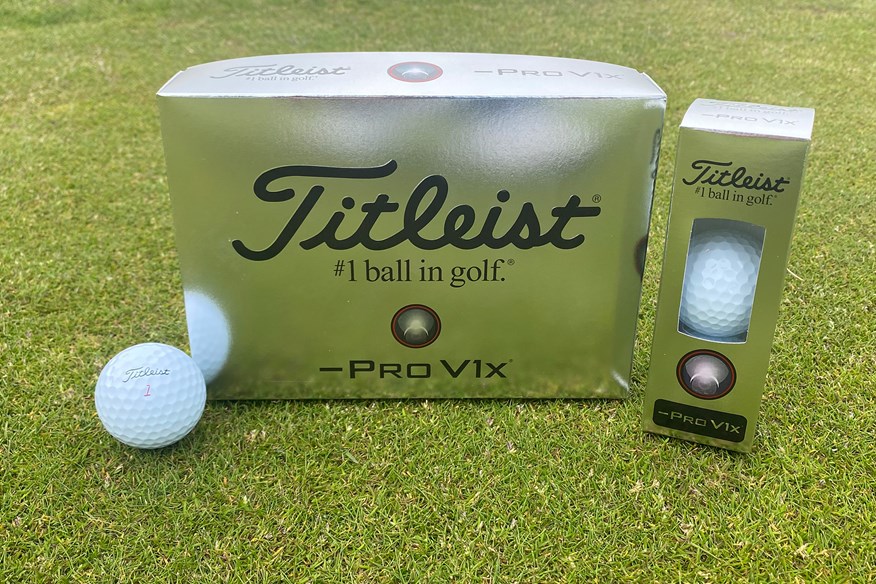

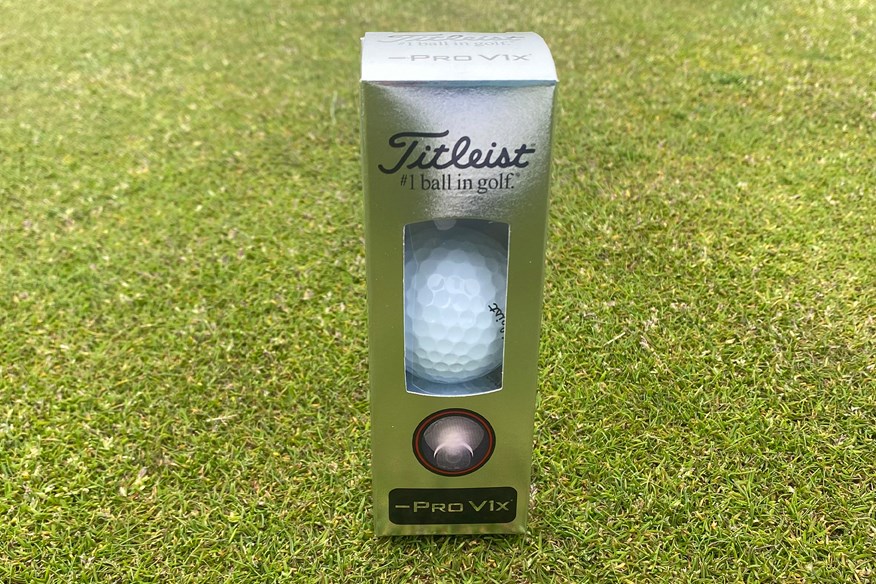
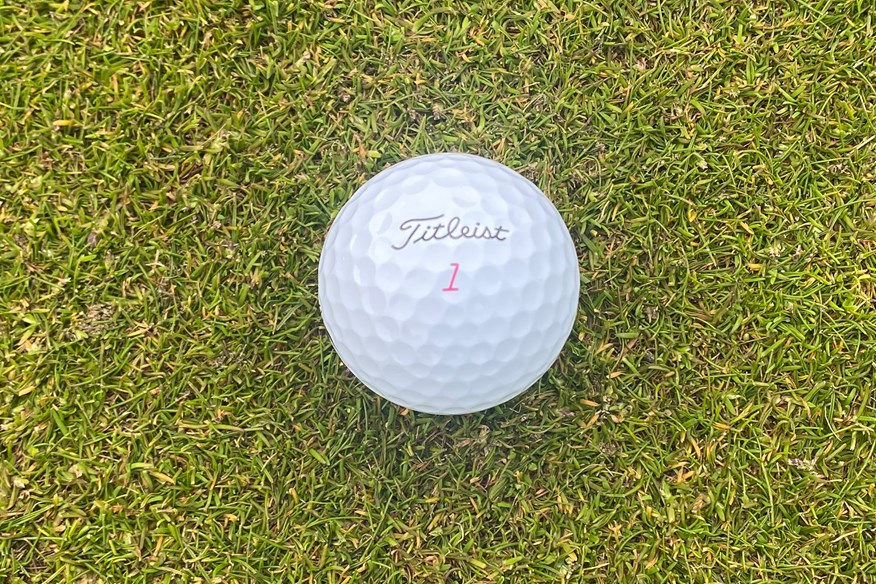
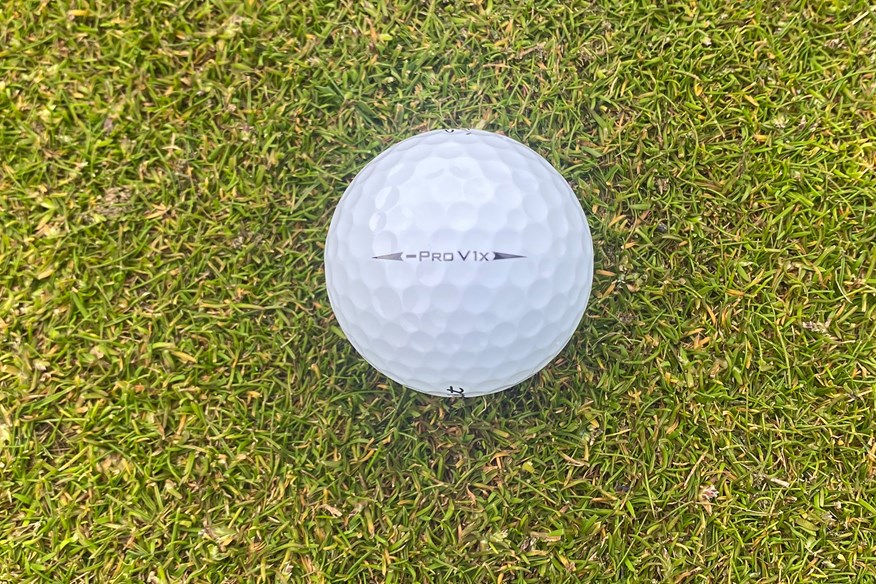
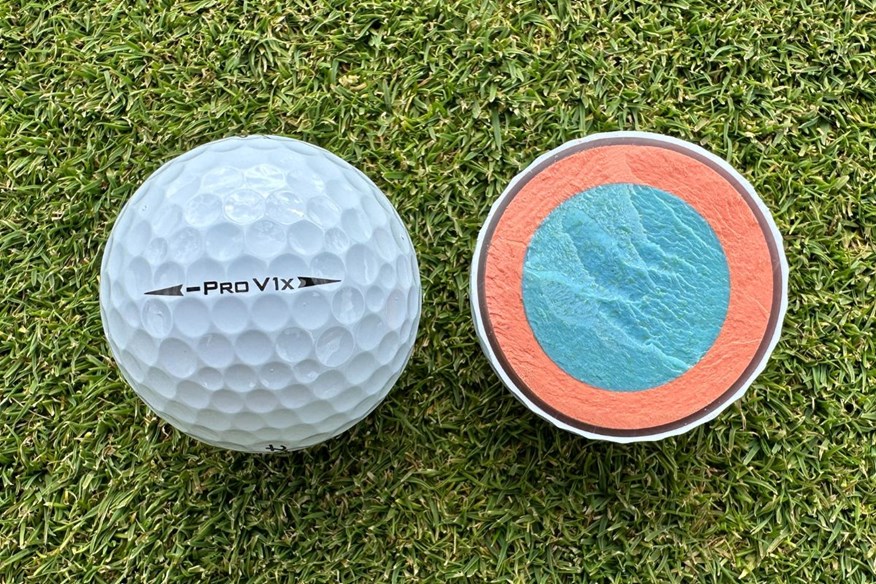
The Pro V1x Left Dash is Titleist's fastest golf ball, but it's not the fastest golf ball out there. At 114mph, that speed materialises into great distance - being one of only three golf balls to exceed 274 yards in the entire test.
Once you begin to slow down, the Pro V1x Left Dash becomes much less efficient in its performance. If you have a quick swing speed, this golf ball is going to serve you well off the tee (second place overall). However, at 93mph, this is the third lowest performing golf ball in this category, and at 78mph, it's the second lowest performing.
Also, it becomes a struggle to generate sufficient ball speed to maximise distance, and it's a similar story in the iron and wedge game.
Titleist sells the Pro V1x Left Dash as a low-spin golf ball that flies similarly to the Pro V1x, and our data supports this. With a 7-iron, the Pro V1x Left Dash has the lowest descent angle, and on the 40-yard pitch shot, it generates the lowest spin.
The Pro V1x Left Dash is perfect if you swing like Bryson DeChambeau and generate tons of spin, but if not, this is a golf ball you're well worth steering clear of.
On-course verdict
When I played the Titleist Pro V1x Left Dash, I immediately noticed how high it launched and how consistent it was from tee to green. It felt firm but still premium, giving me clear feedback on every shot, especially on putts where the response was spot-on.
The ball held up really well over a round, too, with hardly any scuffing. Off the tee, I gained distance thanks to its low spin and towering flight, but I did have to adjust my expectations around the greens - there just wasn’t as much spin or bite as I get with the Pro V1 or Pro V1x.
For me, it’s a ball that shines when I want extra distance and control in the long game, but it’s not the most forgiving choice if I need finesse and stopping power in the short game.
Read our full Titleist Pro V1x Left Dash golf ball review.
Pros
- Consistent towering ball flight
- Competitive long game distance
- Solid feedback throughout the bag
Cons
- Not as versatile as the Pro V1 or Pro V1x
| Carry distance (yds) | Driver 114mph - 274.3 | Driver 93mph - 208.7 | Driver 78mph - 160 | 7-iron - 155.9 |
| Ball speed (mph) | Driver 114mph - 164.3 | Driver 93mph - 133.7 | Driver 78mph - 112.6 | 7-iron - 108.3 |
| Backspin (rpm) | Driver 114mph - 2,587 | Driver 93mph - 2,575 | Driver 78mph - 2,446 | 7-iron - 4,453 | Pitch - 5,631 |
| Launch angle (°) | Driver 114mph - 11.1 | Driver 93mph - 12.9 | Driver 78mph - 14 | 7-iron - 21.1 | Pitch - 31.3 |
| Descent angle (°) | Driver 114mph - 36.5 | Driver 93mph - 31.7 | Driver 78mph - 27.3 | 7-iron - 44.5 | Pitch - 36.6 |
| Peak height (yds) | Driver 114mph - 31.7 | Driver 93mph - 21.1 | Driver 78mph - 15.4 | 7-iron - 29 | Pitch - 6.9 |
| Compression (psi) | 114 |
- Firm cast urethane elastomer cover system
- Fast, low-spin casing layer
- ZG Process Core
- Spherically-tiled 328 tetrahedral dimple design
- 4-Piece construction
- Available in white only
- Alternative models include AIM Enhanced and RCT
Overall: 9th | Speed: 29th | Launch: 13th | Spin: 22nd | Compression: 11th
Most consistent high-spin Titleist golf ball
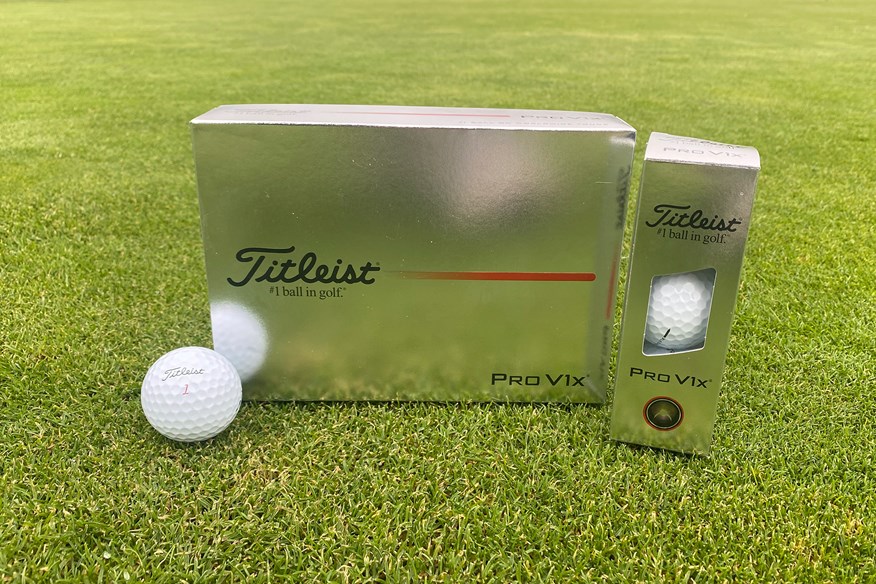

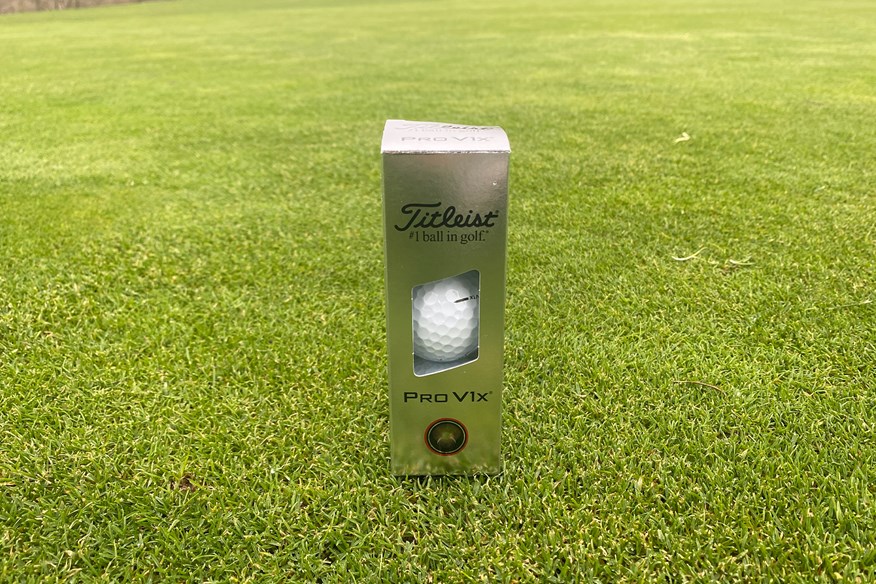
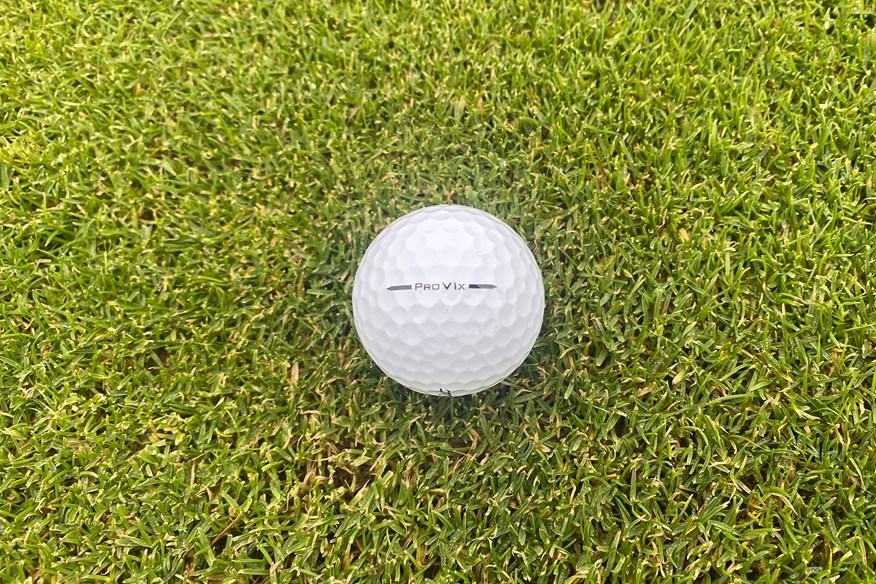
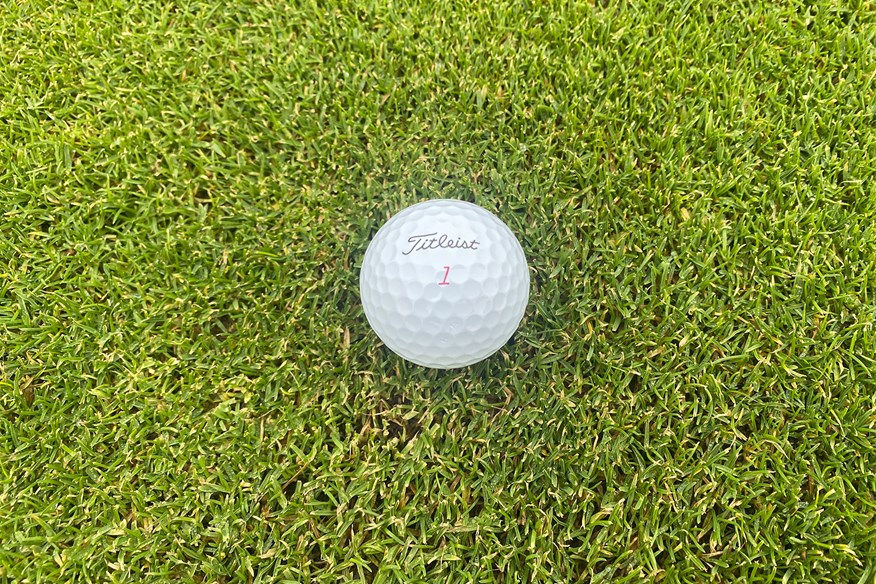
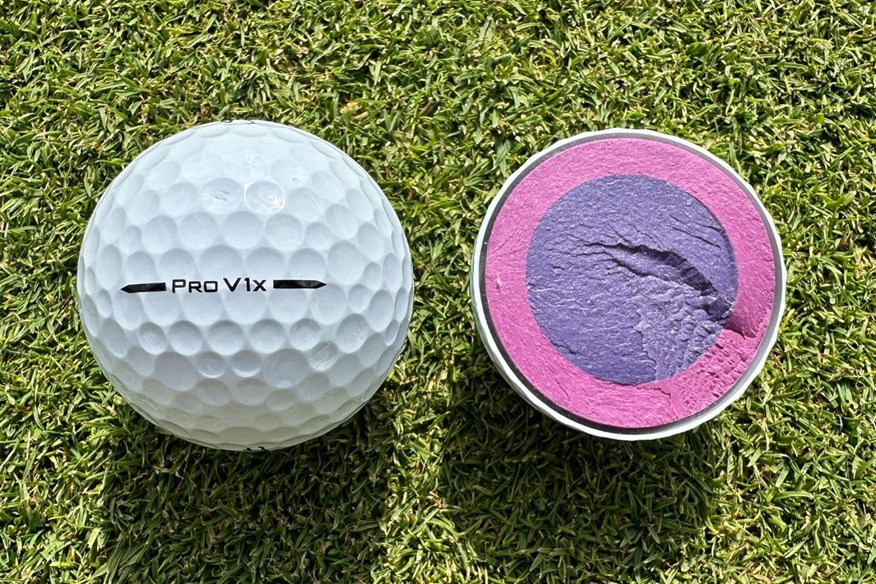
The Pro V1x's best performance came at 114mph, with a third-place finish for tee to green performance. Pro V1x delivers solid numbers at the quicker swing speed, but that performance soon drops off at moderate and slower swing speeds.
Titleist claims the Pro V1x is fast and long off the tee, higher flying than Pro V1, and generates more spin than Pro V1. It's close, but the Pro V1x does produce more spin when approaching and playing around greens than the Pro V1. Against golf balls in the same category, the Pro V1x is ranked seventh for iron and wedge spin.
Where the Pro V1x disappoints most is off the tee. We were expecting this golf ball to perform much better in our robot test - given it's one of the most popular golf balls on Tour - but sadly, it wasn't to be. At every driver swing speed, the Pro V1x doesn't produce as good numbers as the Pro V1.
However, it is very close. The Pro V1 pips the Pro V1x for tee to green performance, but the Pro V1x is the ball you should lean towards if you want more spin.
The performance of the Pro V1x highlights just how impressive the 2025 Pro V1 is.
On-course verdict
When I play the 2025 Titleist Pro V1x, I experience a consistently elevated launch and penetrating flight that gives me confidence from tee to green, and the performance really holds - shots fly true and controlled no matter the lie. It delivers great spin off the tee and exceptional short-game control around the greens, giving me more bite where it counts, and stands out as more durable than previous versions.
The feel is noticeably firmer compared to the Pro V1 and earlier generations, though I do feel it’s not as responsive overall - the feedback is a touch muted, which slightly dampens the experience I loved in the 2023 Pro V1x.
Still, it’s a high-performance ball widely trusted on Tour and offers speed, spin, and precision, just with a firmer, more reserved personality than its predecessor.
Read our full Titleist Pro V1x golf ball review.
Pros
- Towering and penetrating ball flight
- Amazing short game spin and control
- More durable than the previous generation
Cons
- Less responsive and worse feel than previous generation
| Carry distance (yds) | Driver 114mph - 272.6 | Driver 93mph - 208.5 | Driver 78mph - 159.6 | 7-iron - 155.8 |
| Ball speed (mph) | Driver 114mph - 163.9 | Driver 93mph - 133.8 | Driver 78mph - 112.6 | 7-iron - 108.9 |
| Backspin (rpm) | Driver 114mph - 2,711 | Driver 93mph - 2,717 | Driver 78mph - 2,619 | 7-iron - 4,699 | Pitch - 5,952 |
| Launch angle (°) | Driver 114mph - 11 | Driver 93mph - 12.8 | Driver 78mph - 13.7 | 7-iron - 20.9 | Pitch - 30.5 |
| Descent angle (°) | Driver 114mph - 37.2 | Driver 93mph - 32.3 | Driver 78mph - 27.6 | 7-iron - 45.1 | Pitch - 35.7 |
| Peak height (yds) | Driver 114mph - 32.2 | Driver 93mph - 22.4 | Driver 78mph - 15.4 | 7-iron - 29.5 | Pitch - 6.6 |
| Compression (psi) | 108 |
- Faster high gradient dual-core
- Spherically tiled 348 tetrahedral dimple design
- Speed amplifying high-flex casing layer
- Soft cast urethane elastomer cover
- 4-Piece construction
- Available in white and yellow
- Alternative models include AIM Enhanced and RCT
Overall: 10th | Speed: 20th | Launch: 19th | Spin: 35th | Compression: 10th
The SD-X1 is very similar in its characteristics to the SD-01, the main difference being that this model should produce a more penetrating trajectory. However, that's not obvious from our test results.
However, it is apparent that the SD-X1 is the longest and fastest 3-piece golf ball offered by Seed. If you want a softer feeling golf ball than the 4-piece SD-02 and you prioritise off-the-tee performance, the SD-X1 is the Seed model to go for.
At all three driver swing speeds, the SD-X1 is faster and longer than the SD-01, and its best result is at 78mph, being the second-longest (161.1yds) and second-fastest (113.1mph).
The SD-X1 is a lower-spinning golf ball than the SD-01 when approaching and playing around greens, which could very well lend itself to the more penetrating nature, although it does launch slightly higher.
I would bear the SD-X1 in mind if you prioritise distance off the tee and a softer feel. If not, I'd say to go for the SD-01 if you want more spin and control and soft feel, or the SD-02 if you want a firmer feel and more all-around performance.
On-course verdict
For the right golfer, they could easily love this golf ball, but for me, I wasn’t able to unlock the true potential of the SD-X1, and I don’t feel as though there will be many golfers who’d get on better with this model than they would with either the SD-01 or SD-02.
A low ball flight isn’t massively desirable for most golfers. You might find it strange, considering I play links golf, that I don’t want a ball with a penetrating ball flight, but it’s just not something I look for in a golf ball.
Because of the low flight, I don’t enjoy the way this ball travels off the tee – but you might think otherwise if you give it a go.
I can’t criticize the feel and response of the SD-X1 one bit. I’m a massive fan of how Seed golf balls feel off the club face because of how responsive they are.
Throughout the bag, you get a pleasant feeling, whether you prefer soft or firm-feeling golf balls.
Read our full Seed SD-X1 golf ball review.
Pros
- More durable than the previous model
- Impressive grab on approach shots
- Very responsive feedback
Cons
- Harder to generate spin off the tee than other Seed golf balls because it launches lower
| Carry distance (yds) | Driver 114mph - 270.5 | Driver 93mph - 208 | Driver 78mph - 161.1 | 7-iron - 157.6 |
| Ball speed (mph) | Driver 114mph - 163.3 | Driver 93mph - 133.7 | Driver 78mph - 113.1 | 7-iron - 109 |
| Backspin (rpm) | Driver 114mph - 2,773 | Driver 93mph - 2,733 | Driver 78mph - 2,523 | 7-iron - 4,418 | Pitch - 5,782 |
| Launch angle (°) | Driver 114mph - 10.8 | Driver 93mph - 12.7 | Driver 78mph - 13.9 | 7-iron - 21.2 | Pitch - 30.8 |
| Descent angle (°) | Driver 114mph - 37 | Driver 93mph - 32.3 | Driver 78mph - 27.6 | 7-iron - 44.8 | Pitch - 36.3 |
| Peak height (yds) | Driver 114mph - 31.6 | Driver 93mph - 22.3 | Driver 78mph - 15.6 | 7-iron - 29.7 | Pitch - 7 |
| Compression (psi) | 101 |
- High compression high energy rubber core
- High-flex HPF mantle
- Thinner cast urethane cover
- 318 dimples
- 3-Piece construction
- Available in white only
- An alternative model is The Jack
Overall: 11th | Speed: 19th | Launch: 25th | Spin: 35th | Compression: 6th
The Chrome Tour Triple Diamond (TD) is said to provide all the major-winning characteristics of the Chrome Tour and Chrome Tour X in one package, designed for fast swing speeds, delivering a penetrating flight, and generating less spin. Is that the case?
The results from our robot test show this golf ball actually sits between the Chrome Tour and Chrome Tour X. Off the tee, it's lower-spinning than the Chrome Tour X, but not as low-spinning as the Chrome Tour - at all three driver swing speeds.
Chrome Tour TD is one of the lower-spinning golf balls off the tee, and is much closer to the Chrome Tour than the Chrome Tour X. However, with distance and speed, it's marginally closer to the Chrome Tour X.
Approaching and playing around greens, you can expect low spin from this golf ball, as our test results show. Chrome Tour TD is the third-lowest spinning golf ball in the four- and five-piece category for the 7-iron shot and the 40-yard pitch shot.
I wouldn't say the Chrome Tour TD is redundant in Callaway's line-up because this golf ball does have its fans, but I think it would be difficult for someone not to get on better with the Chrome Tour or Chrome Tour X.
On-course verdict
I'm not the golfer the Callaway Chrome Tour TD appeals to, and for that reason, my on-course verdict might be slightly harsh, but I just don't like this golf ball.
I can see how it may appeal to other golfers, but I don't see how most amateur golfers will need to play with the TD over the Chrome Tour or Chrome Tour X.
You can tell this is in the Chrome Tour family based on feel, response, and sound. It's a quality golf ball - no doubt about that.
But with its performance, it's very hit and miss, and for me, it's a miss. I have a quick swing speed, and I can't make this model work for me at all; it's too low-spinning, and that continues into and around the greens.
If you give the Chrome Tour TD a go, you might have a polar opposite experience to mine, but I think a safer option is either the Chrome Tour or Chrome Tour X.
Pros
- Great feel and response
- Impressive distance
- Low-spinning off the tee
Cons
- In the wrong hands this won't perform
| Carry distance (yds) | Driver 114mph - 272.4 | Driver 93mph - 209.4 | Driver 78mph - 161.1 | 7-iron - 156.3 |
| Ball speed (mph) | Driver 114mph - 164 | Driver 93mph - 134.1 | Driver 78mph - 113.1 | 7-iron - 108.9 |
| Backspin (rpm) | Driver 114mph - 2,713 | Driver 93mph - 2,738 | Driver 78mph - 2,539 | 7-iron - 4,606 | Pitch - 5,867 |
| Launch angle (°) | Driver 114mph - 10.8 | Driver 93mph - 12.7 | Driver 78mph - 13.9 | 7-iron - 21 | Pitch - 30.5 |
| Descent angle (°) | Driver 114mph - 36.9 | Driver 93mph - 32.6 | Driver 78mph - 27.7 | 7-iron - 44.9 | Pitch - 35.8 |
| Peak height (yds) | Driver 114mph - 31.8 | Driver 93mph - 22.6 | Driver 78mph - 15.6 | 7-iron - 29.4 | Pitch - 6.7 |
| Compression (psi) | 112 |
- Hyper fast soft core
- Seamless Tour aero
- High-performance Tour urethane soft cover
- 332 dimples
- 4-Piece construction
- Available in white only
- An alternative model is the Triple Track
Overall: 12th | Speed: 32nd | Launch: 33rd | Spin: 17th | Compression: 4th
Saying a golf ball is average might sound like a negative, but it's actually more of a compliment than you might initially think. The Maxfli Tour X has no areas where it massively excels, but also no areas where it lacks performance.
Maxfli Tour X didn't win any awards in our test, but nothing jumps out to put you off this golf ball. At all three driver swing speeds, the biggest distance between this golf ball and the best is 3.3 yards and 1.1mph ball speed - at 114mph.
With approach play and short game performance, it's a very similar story. The Tour X isn't setting any standards for spin, but it's up there with the higher-spinning golf balls.
It's difficult to criticise the Maxfli Tour X because it's such a solid golf ball from tee to green. Are there better options out there? 100 percent, but for the price, and with Tour approval, this is a brilliant four-piece Tour-level golf ball.
On-course verdict
I'm a massive fan of the Maxfli Tour X. I think it plays very honest and true to how a four-piece golf ball should play. The Tour X doesn't struggle in generating spin anywhere on the golf course, which is something I like, but some of you might not.
Off the tee and around the green, the Tour X is very easy to control because of its high-spinning nature. I don't think spin hinders the performance of this ball on-course, but for some of you who don't require a high-spin model, the Tour X might be a bit too much.
My favorite aspect of the Tour X is its firmness. This is one of the firmer golf balls on the market, and I absolutely love that! You get instant feedback from every shot. I remember giving a sleeve to my playing partner, and the first time he hit one, he instantly looked to me because it produced a sound and feel he'd never encountered before.
Based on sound, feel, and spin, this is a very genuine four-piece golf ball that offers great tee-to-green performance.
Pros
- Consistent golf ball in every area
- Amazing value
- Great feel, feedback, and response
Cons
- Not a special golf ball that's going to blow you away
| Carry distance (yds) | Driver 114mph - 272.3 | Driver 93mph - 209.8 | Driver 78mph - 161.2 | 7-iron - 156.2 |
| Ball speed (mph) | Driver 114mph - 164 | Driver 93mph - 134.4 | Driver 78mph - 113.2 | 7-iron - 109.1 |
| Backspin (rpm) | Driver 114mph - 2,828 | Driver 93mph - 2,860 | Driver 78mph - 2,701 | 7-iron - 4,694 | Pitch - 6,028 |
| Launch angle (°) | Driver 114mph - 11 | Driver 93mph - 12.7 | Driver 78mph - 13.7 | 7-iron - 20.9 | Pitch - 30.5 |
| Descent angle (°) | Driver 114mph - 38.1 | Driver 93mph - 33.2 | Driver 78mph - 28.1 | 7-iron - 45.1 | Pitch - 35.7 |
| Peak height (yds) | Driver 114mph - 33.1 | Driver 93mph - 23.1 | Driver 78mph - 15.7 | 7-iron - 29.6 | Pitch - 6.7 |
| Compression (psi) | 117 |
- Cast urethane cover
- Polyhedron 336 dimple design
- Dual Ionomer mantle
- High energy core
- 4-Piece construction
- Available in white and yellow
Most consistent golf balls: Robot test data
The table below highlights how the 12 most consistent golf balls in our test ranked across each of the four directly measured criteria. The Titleist AVX was the only non-Tour-targeted ball to make the shortlist, which features no less than four Titleist models.
| Overall Rank | Brand | Model | Ball Speed | Launch Angle | Backspin | Compression |
| 1 | Titleist | Pro V1 | 31 | 11 | 9 | 1 |
| 2 | Vice | Pro Plus | 18 | 10 | 10 | 18 |
| 3 | Vice | Pro | 21 | 18 | 18 | 5 |
| 4 | Titleist | AVX | 22 | 20 | 21 | 7 |
| 5 | Wilson | Staff Model | 24 | 18 | 17 | 14 |
| 6 | Maxfli | Tour | 24 | 21 | 19 | 9 |
| 7 | Seed | SD-02 | 27 | 19 | 16 | 12 |
| 8 | Titleist | Pro V1x Left Dash | 26 | 22 | 19 | 8 |
| 9 | Titleist | Pro V1x | 29 | 13 | 22 | 11 |
| 10 | Seed | SD-X1 | 20 | 19 | 35 | 10 |
| 11 | Callaway | Chrome Tour Triple Diamond | 19 | 25 | 35 | 6 |
| 12 | Maxfli | Tour X | 32 | 33 | 17 | 4 |
View the full 2025 golf ball robot test results.
Most consistent golf balls 2025: Buying guide
If you’ve decided to prioritize consistency above all else when looking for a new golf ball, then hopefully the results from our testing have helped you narrow down that search.
Now it’s time to consider your game-specific requirements, so before committing to a purchase, take a read through our detailed buying guide, which will provide you with all the clarity you need to make the most informed decision for your game.
Budget
With golf balls, there are models ranging in price depending on the construction and technology. Before the introduction of direct-to-consumer (DTC) golf balls, for most golfers, their budget was dictated by their golfing ability. This is no longer the case, with the ability to purchase premium golf balls at a much more affordable price.
You can spend as little as £15 on a dozen golf balls or up to four times that amount, depending on what you need/want to gain from your golf ball. Budget is still somewhat dictated by your golfing ability, but not as much as it previously had been.
Ability
Despite there being a wide range of golf balls that aren’t classified as premium golf balls, there aren’t many golfers who wouldn’t benefit from playing with one of those golf balls. The best premium golf balls are packed with the brand’s most innovative technology to help the user get from tee to green in as few shots as possible.
Some golfers are more than happy playing with one of the best cheap golf balls or one of the best value golf balls because of the minimal impact they have on your finances, which is completely acceptable. Golf can be an expensive sport, and finding ways to save money is very important. However, I would say that being frugal when it comes to golf balls isn’t as necessary as it is with other equipment in your bag.
Performance
Golf balls are designed to perform in a particular manner depending on their composition, technology, material, etc. The difficulty is figuring out what performance you need from a golf ball to help you play better golf. With such an extensive amount of golf balls on the market, what actually differentiates them and makes one option right for you and another wrong for you?
It can be hard to know exactly what golf balls are right, but with a little time and effort, you can find the perfect ball or a couple of brilliant options very easily. Most manufacturers claim their golf balls deliver low driver spin and long distance, while with a wedge in hand, you’ll achieve amazing spin and control. However, not every golf ball is designed to do this. It’s only by trying different golf balls that you’ll be able to discover which models perform best for you and help you shoot lower scores.
The best premium golf balls and best golf balls for mid-handicappers will deliver optimal spin and distance at the top end and bottom end of your golf bag. Whereas the best distance golf balls or best cheap golf balls might travel far off the tee, but it’s more likely that this will compromise short-game performance.
Feel
Feel is for many golfers a non-negotiable. The majority of golfers enjoy playing with a soft-feeling golf ball. Most golf balls on the market are soft; it’s very rare to come across a rock that you have been accustomed to playing with in years gone by. Even a firm-feeling golf ball like the Titleist Pro V1x is soft compared to those hard golf balls that used to exist.
To play with a good-feeling golf ball, you don’t need to spend an obscene amount of money, but feel isn’t everything. You might enjoy the feeling of a golf ball, but if it doesn’t send the ball home in fewer shots, then it’s not the ball for you.
Spin
Some golf balls generate spin more easily than others, and this is dependent on their composition. Golf balls sporting more layers will naturally behave better on the greens because spin comes from the layers reacting with one another. However, that doesn’t make premium golf balls built of four or five layers spin ridiculously off the tee because the technology is massively refined, so the spin is optimal off the tee and when attacking pins.
Cheaper golf balls tend to be made up of two layers, and this is why they tend to be lower spinning in the short game but remain competitive with distance off the tee. Another factor that influences spin is cover material; many of the best cheap golf balls and best golf balls for beginners and high-handicappers feature a Surlyn or ionomer cover, which creates less friction with the clubface than a urethane cover, which can be found on the best premium golf balls and best golf balls for mid-handicappers.
A common misconception in golf is that golfers view spin as a negative if it creeps up. However, in most instances, spin is your friend. Therefore, choosing a golf ball that spins higher than another is often the best practice because this will help to control the ball better around the course, both off the tee and when hitting into greens.
Distance
My opinion is that distance is the least important factor to consider when choosing a golf ball because there are copious means of gaining distance. When choosing the best golf ball for you, you should start around the greens and work your way back to the tee box. The best way of doing this is with a launch monitor to see your numbers, but if you don’t have access to one, you can do it with your eye very easily.
If you start by chipping and playing full wedge shots into a green, you’ll want to whittle your options down to the ones producing the best spin. Then, when you move back to hitting the balls with a 7-iron, you want to keep an eye on spin, but also start to factor in carry distance.
By the time you’re standing on the tee box, you should have narrowed down your options to just a handful of models. At this point, you factor in distance most, but it still shouldn’t be the case that you disregard everything else you’ve seen and choose the ball that travels farthest off the tee.
If you test golf balls in this way, it would be very surprising if one of the best premium golf balls didn’t come out on top. Or if you’re not testing premium golf balls, the one with the most technology and sporting a urethane cover. No matter what golf balls you’re testing, there’s always going to be some that work and some that don’t, and that’s why it’s important to test the options based on your game.
Alignment
There are many golf balls that are now being produced with enhanced alignment aids printed on them. There are many brands offering golf balls with alignment aids varying in size and style. I would personally recommend giving one a go just to discover if it benefits your game. What’s the harm in trying?
Colour
Many golfers resort to the traditional white golf ball, but it is often the case now that manufacturers offer their golf balls in at least one or more colours, so you can pick the ball that you can see best.
Colourful golf balls make for some of the best winter golf balls because of their enhanced visibility. I know of some golfers who view coloured golf balls as being inferior to white golf balls (nonsense), even when they are the exact same golf ball. No one likes losing a golf ball, so pick the colour you can see best and start saving your scores and money.
Most consistent golf balls: FAQs
What to read next
For performance insights tailored to your swing speed and preferences, head to our results hubs:
- Best 4 and 5-piece golf balls
- Best 3-piece golf balls
- Best 2-piece golf balls
- Best golf balls for fast swing speeds
- Best golf balls for average swing speeds
- Best golf balls for slow swing speeds
- Best golf balls for distance
- Best golf balls for approach play
- Best golf balls for short game
- Best golf ball for mid-handicaps
- Best golf balls for beginners
